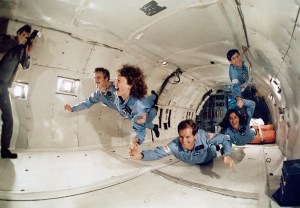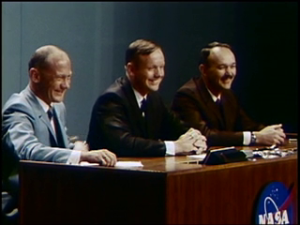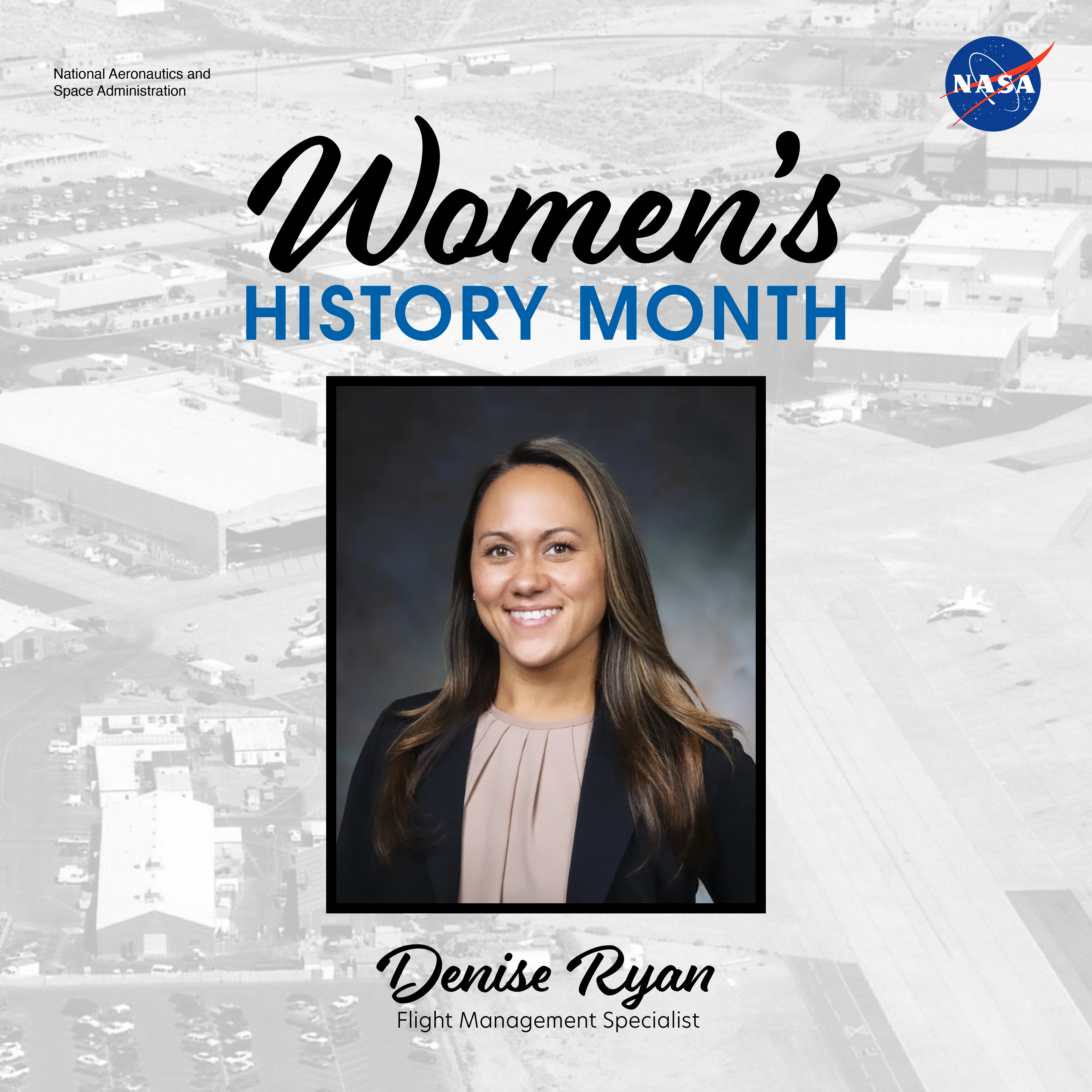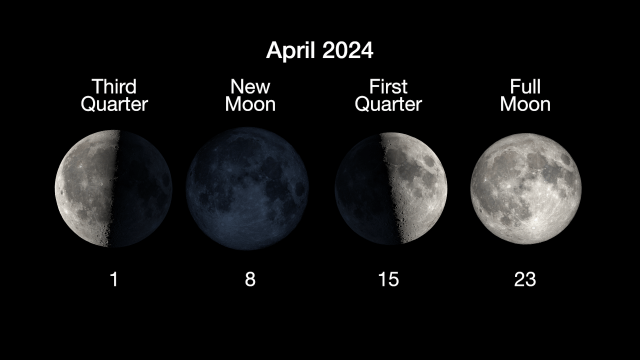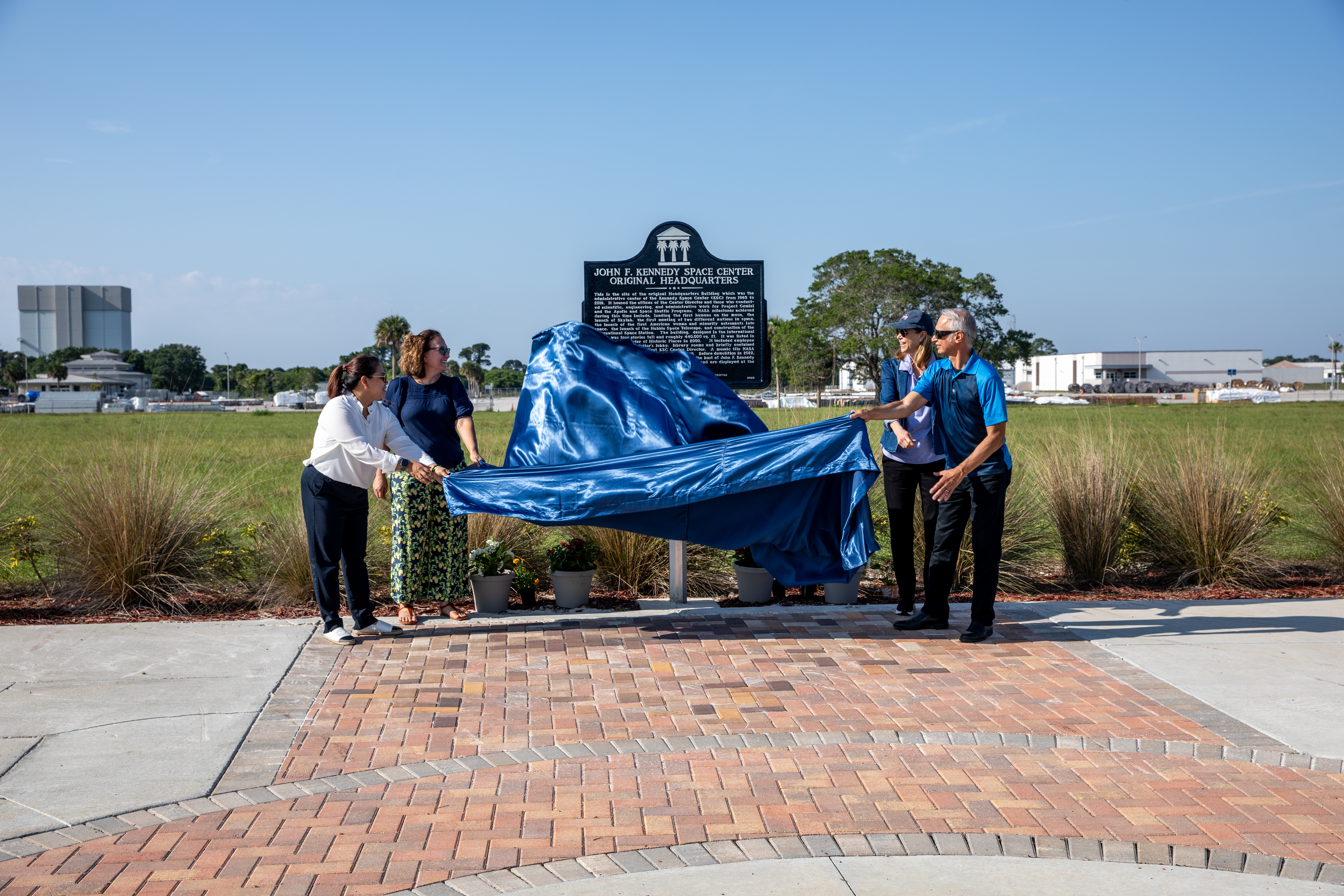15 Years Ago: STS-128 Delivers Cargo to Enable Six-Person Space Station Crew
On Aug. 28, 2009, space shuttle Discovery began its 37th trip into space. The 17A mission to the International Space Station was the 30th shuttle flight to the orbiting lab. During the 14-day mission, the seven-member STS-128 crew worked with Expedition 20, the first six-person crew aboard the station, during nine days of docked operations. […]
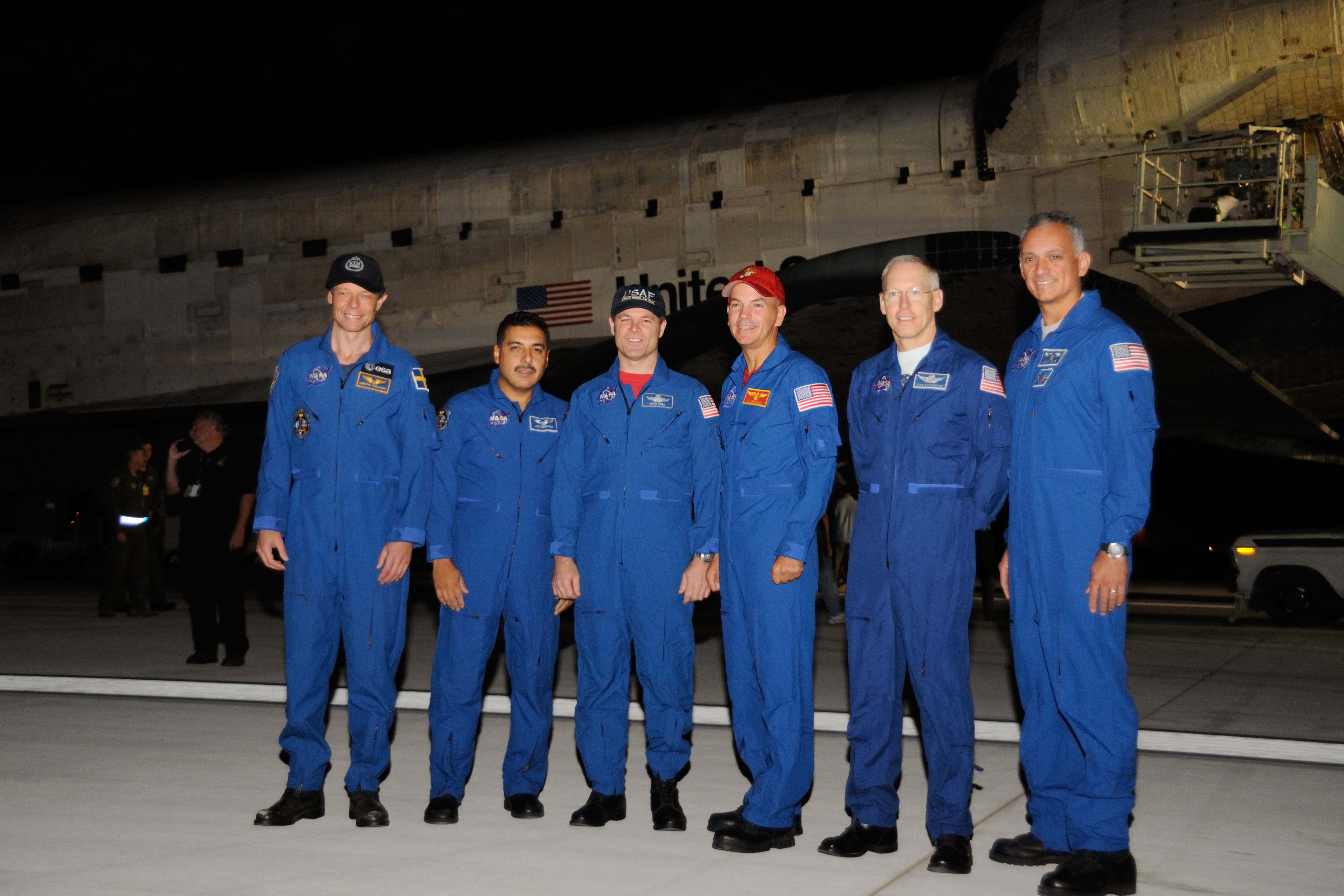
On Aug. 28, 2009, space shuttle Discovery began its 37th trip into space. The 17A mission to the International Space Station was the 30th shuttle flight to the orbiting lab. During the 14-day mission, the seven-member STS-128 crew worked with Expedition 20, the first six-person crew aboard the station, during nine days of docked operations. In addition to completing a one-for-one long-duration crew member exchange, they delivered more than seven tons of supplies, including three new payload racks and three systems to maintain a six-person crew aboard the space station. They completed three spacewalks to perform maintenance on the facility, prepare the station for the arrival of the next module, and retrieve two science experiments for return to Earth.
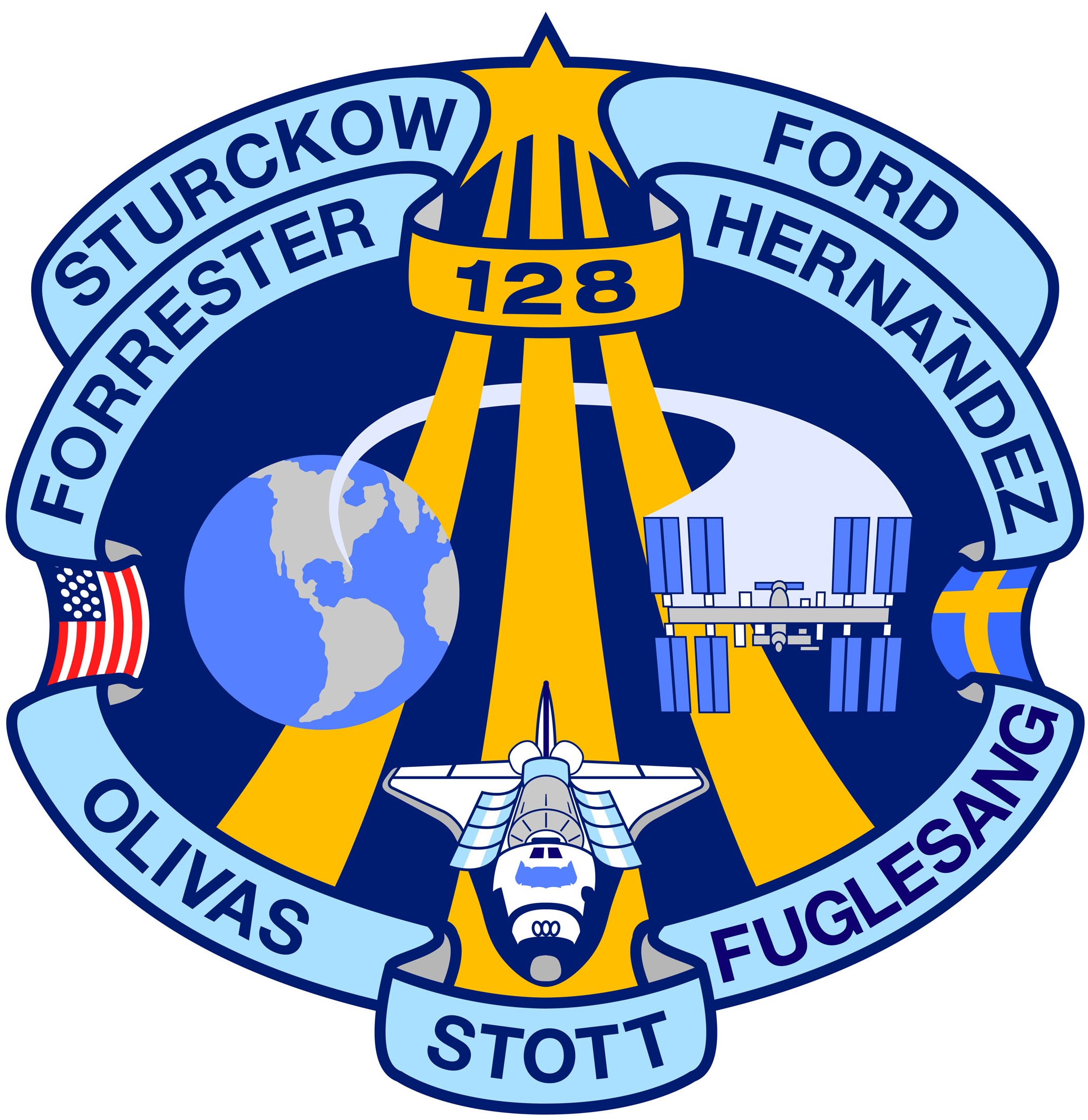
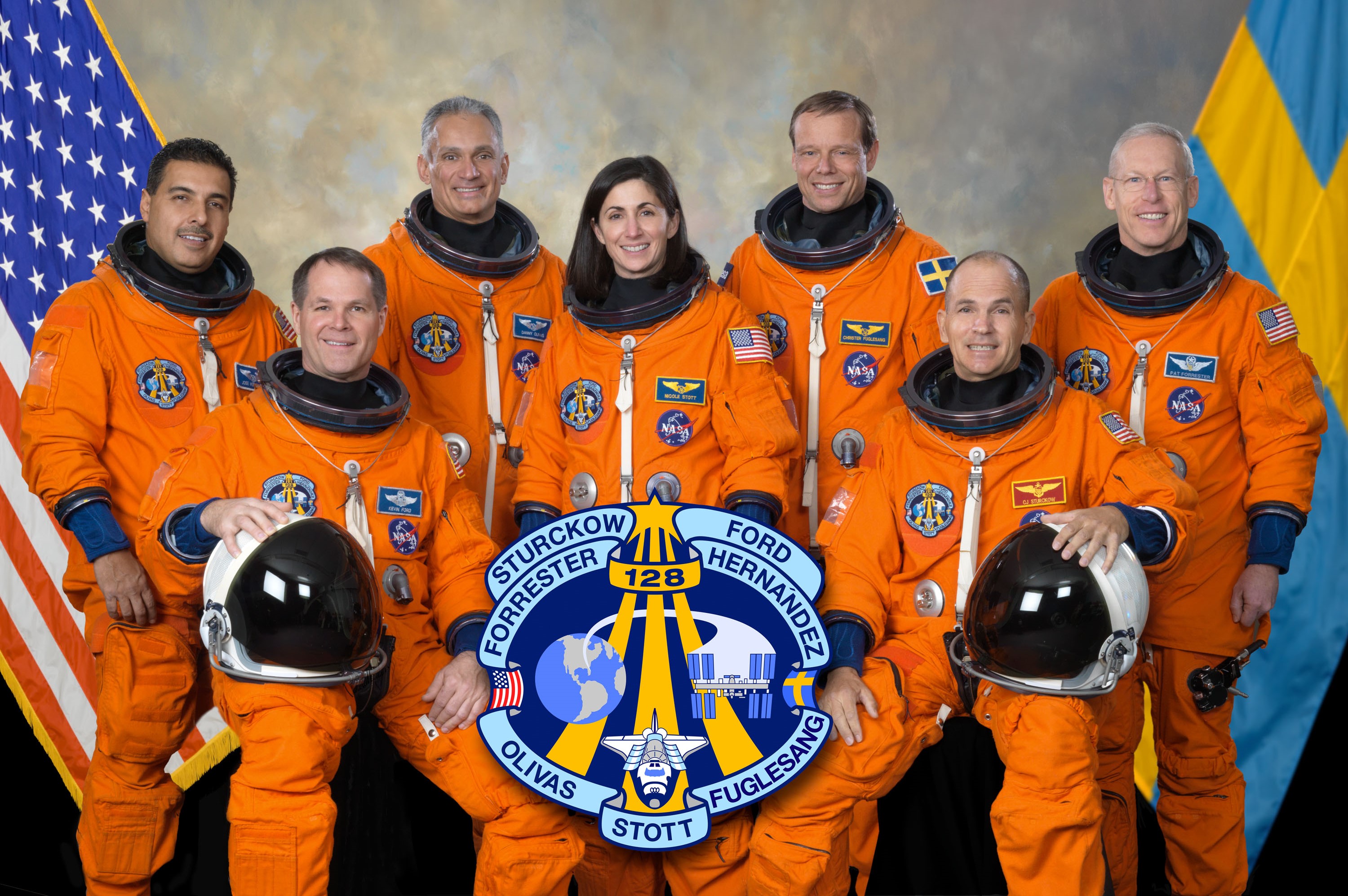
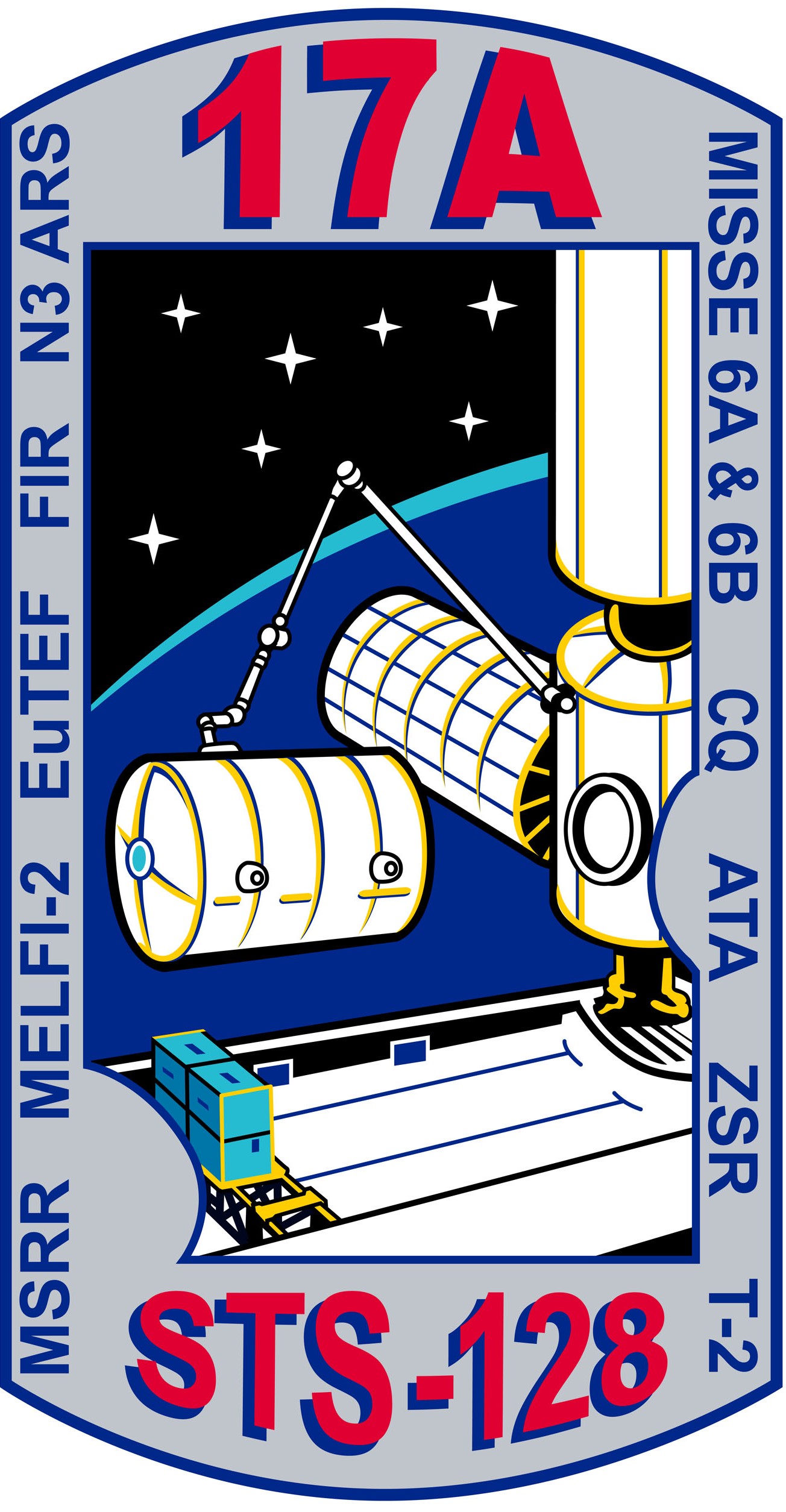
Left: The STS-128 crew patch. Middle: Official photograph of the STS-128 crew of José M. Hernández, left, Kevin A. Ford, John D. “Danny” Olivas, Nicole P. Stott, A. Christer Fuglesang of Sweden representing the European Space Agency, Frederick “Rick” W. Sturckow, and Patrick G. Forrester. Right: The 17A mission patch.
The seven-person STS-128 crew consisted of Commander Frederick “Rick” W. Sturckow, Pilot Kevin A. Ford, and Mission Specialists Patrick G. Forrester, José M. Hernández, John D. “Danny” Olivas, and A. Christer Fuglesang of Sweden representing the European Space Agency (ESA), and Nicole P. Stott. Primary objectives of the mission included the launch to the station of facilities required to maintain a permanent six-person crew and the exchange of Stott for Timothy L. Kopra who had been aboard the space station since July 2009 as a member of Expedition 20. The facilities, launched inside the Leonardo Multi-Purpose Logistics Module (MPLM), included an additional Crew Quarters, the T2 COLBERT treadmill, and an Air Revitalization System rack. Three payload racks – the Materials Science Research Rack, the Fluids Integrated Rack, and the second Minus Eighty-degree Laboratory Freezer for ISS – also rode inside the MPLM for transfer to the station to expand its research capabilities.

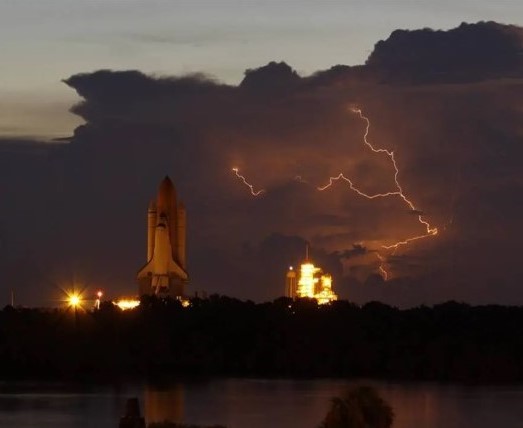
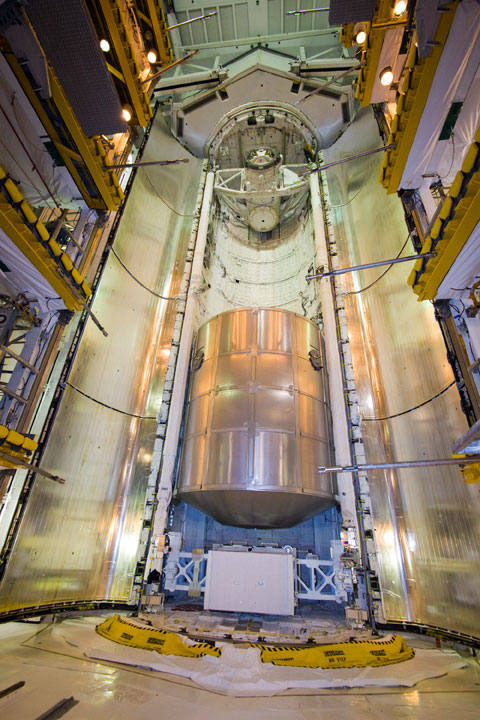
Left: The STS-128 crew at the conclusion of the Terminal Countdown Demonstration Test at NASA’s Kennedy Space Center in Florida. Middle: Space shuttle Discovery during the rollout to Launch Pad 39A. Right: The Leonardo Multi-Purpose Logistics Module in Discovery’s payload bay at Launch Pad 39A.
Discovery returned from its previous mission, STS-119, on March 28, 2009, and workers towed it to the Orbiter Processing Facility at NASA’s Kennedy Space Center (KSC). The orbiter rolled over to the Vehicle Assembly Building on July 26, and after mating with its external tank and twin solid rocket boosters, rolled out to Launch Pad 39A on Aug. 4, targeting Aug. 25 for launch. Three days later, the seven-member crew participated in the Terminal Countdown Demonstration Test, essentially a dress rehearsal of the actual countdown for launch, returned to Houston for final training. They arrived at KSC on Aug 19 to prepare for launch.
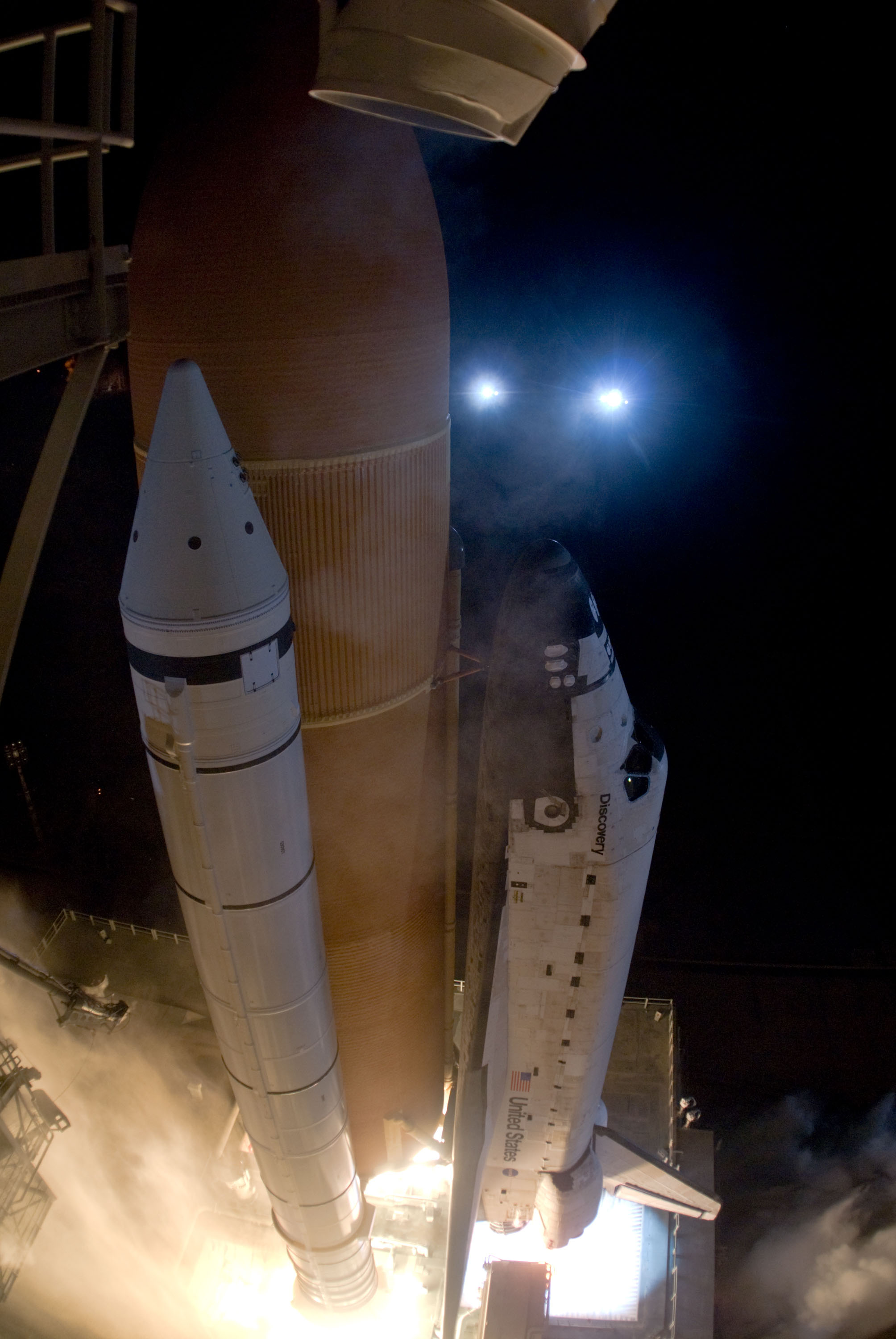

Left: Liftoff of space shuttle Discovery on STS-128. Right: Discovery streaks into the night sky.
Clouds and lighting in the launch area forced a scrub of the first launch attempt on Aug. 25, while a faulty valve indicator scrubbed the next day’s attempt. On Aug. 28, at 11:59 p.m. EDT, space shuttle Discovery lifted off from Launch Pad 39A to begin its 37th trip into space, carrying its seven-member crew on the 17A space station outfitting and resupply mission. Eight and a half minutes later, Discovery and its crew had reached orbit. This marked Sturckow’s fourth time in space, Forrester’s third, Olivas’ and Fuglesang’s second, while Ford, Hernández, and Stott enjoyed their first taste of weightlessness.


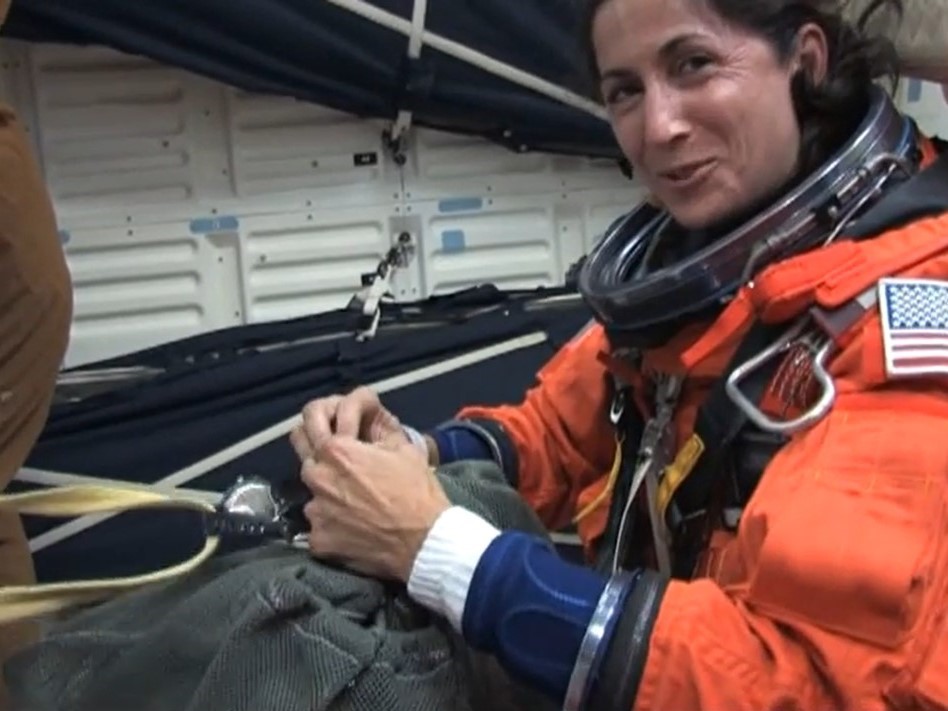
First time space flyers Kevin A. Ford, left, José M. Hernández, and Nicole P. Stott enjoying the first few minutes of weightlessness shortly after reaching orbit.
After reaching orbit, the crew opened the payload bay doors and deployed the shuttle’s radiators, and removed their bulky launch and entry suits, stowing them for the remainder of the flight. The astronauts spent five hours on their second day in space conducting a detailed inspection of Discovery’s nose cap and wing leading edges, with Ford, Forrester, and Hernández taking turns operating the Shuttle Remote Manipulator System (SRMS), or robotic arm, and the Orbiter Boom Sensor System (OBSS).
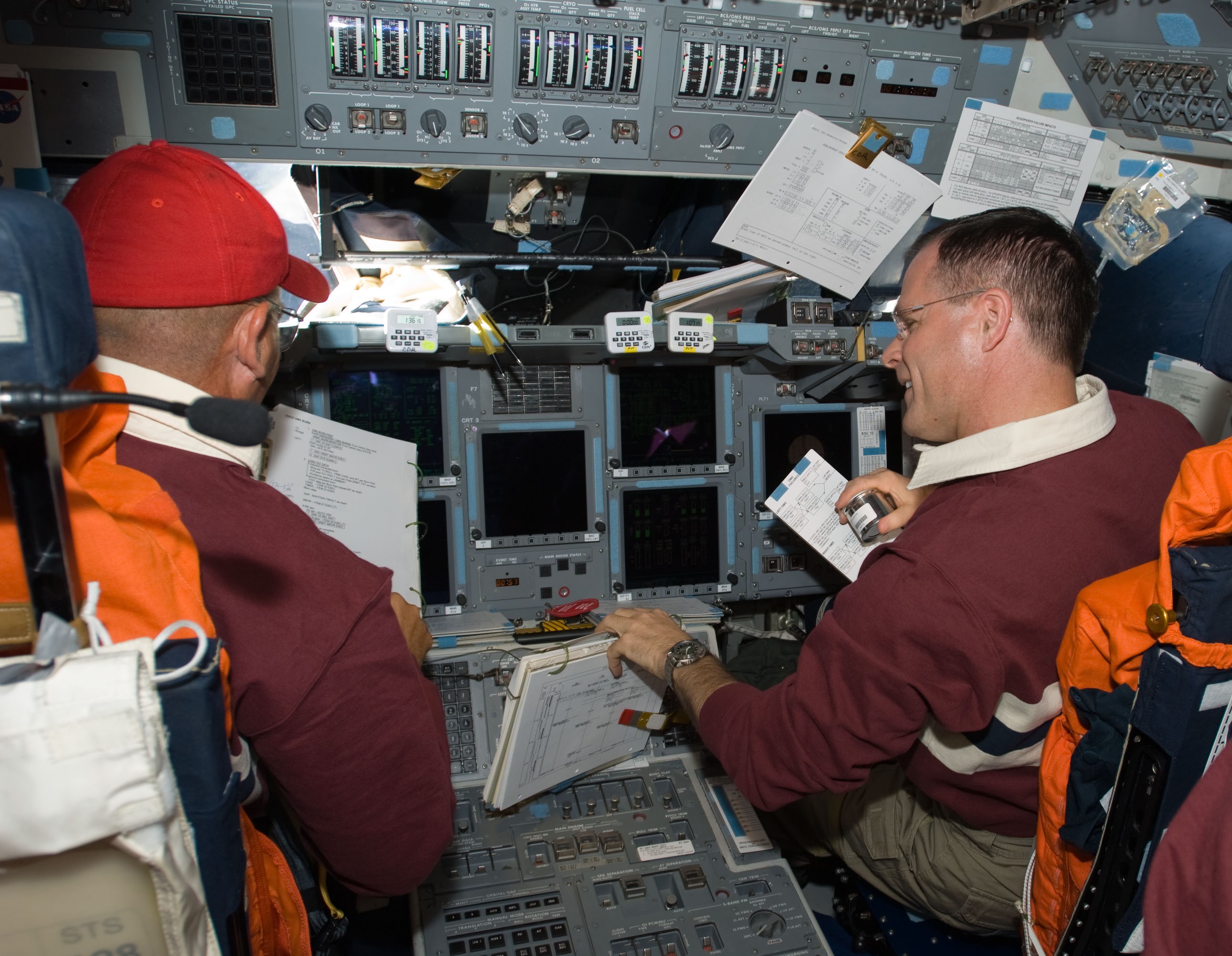
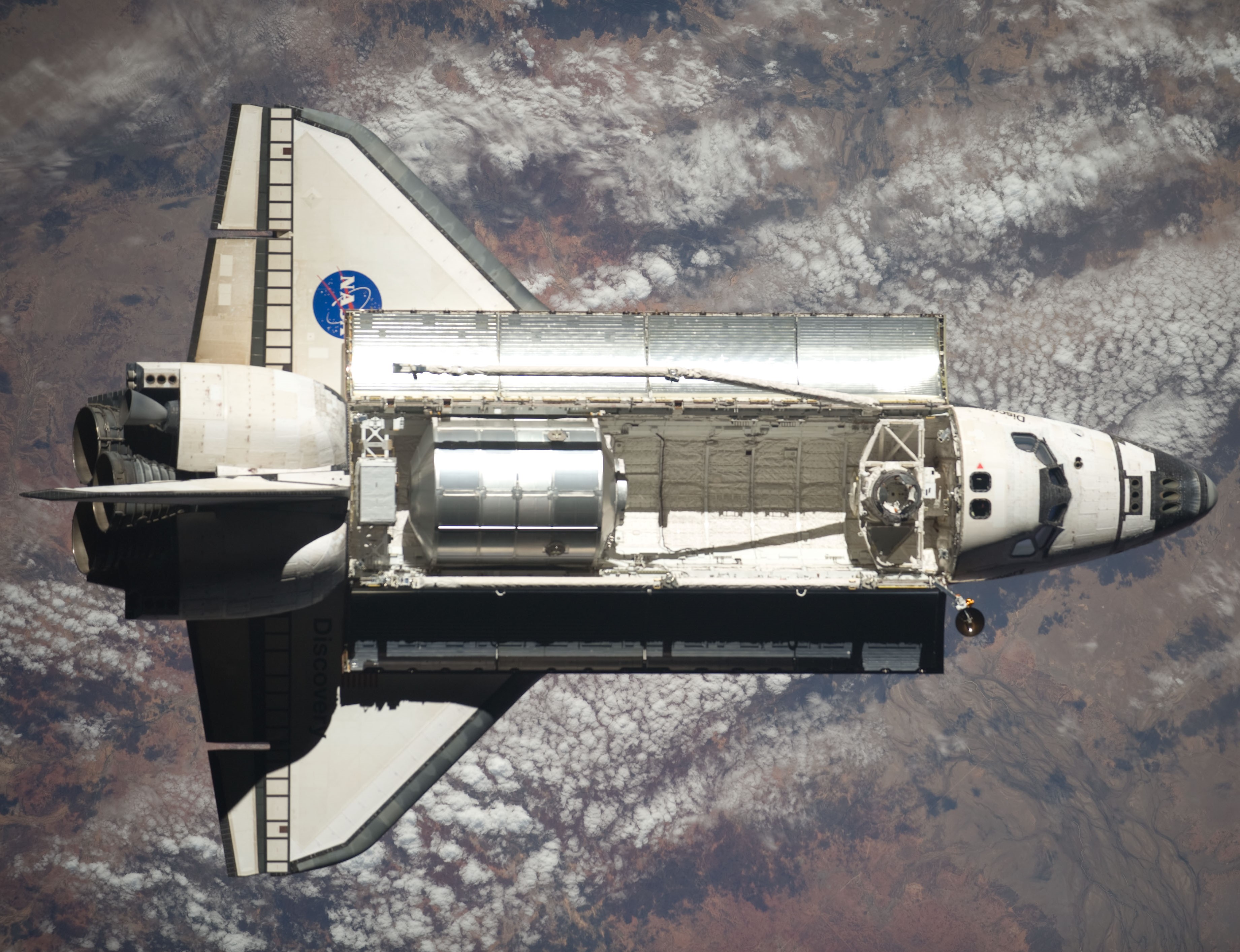
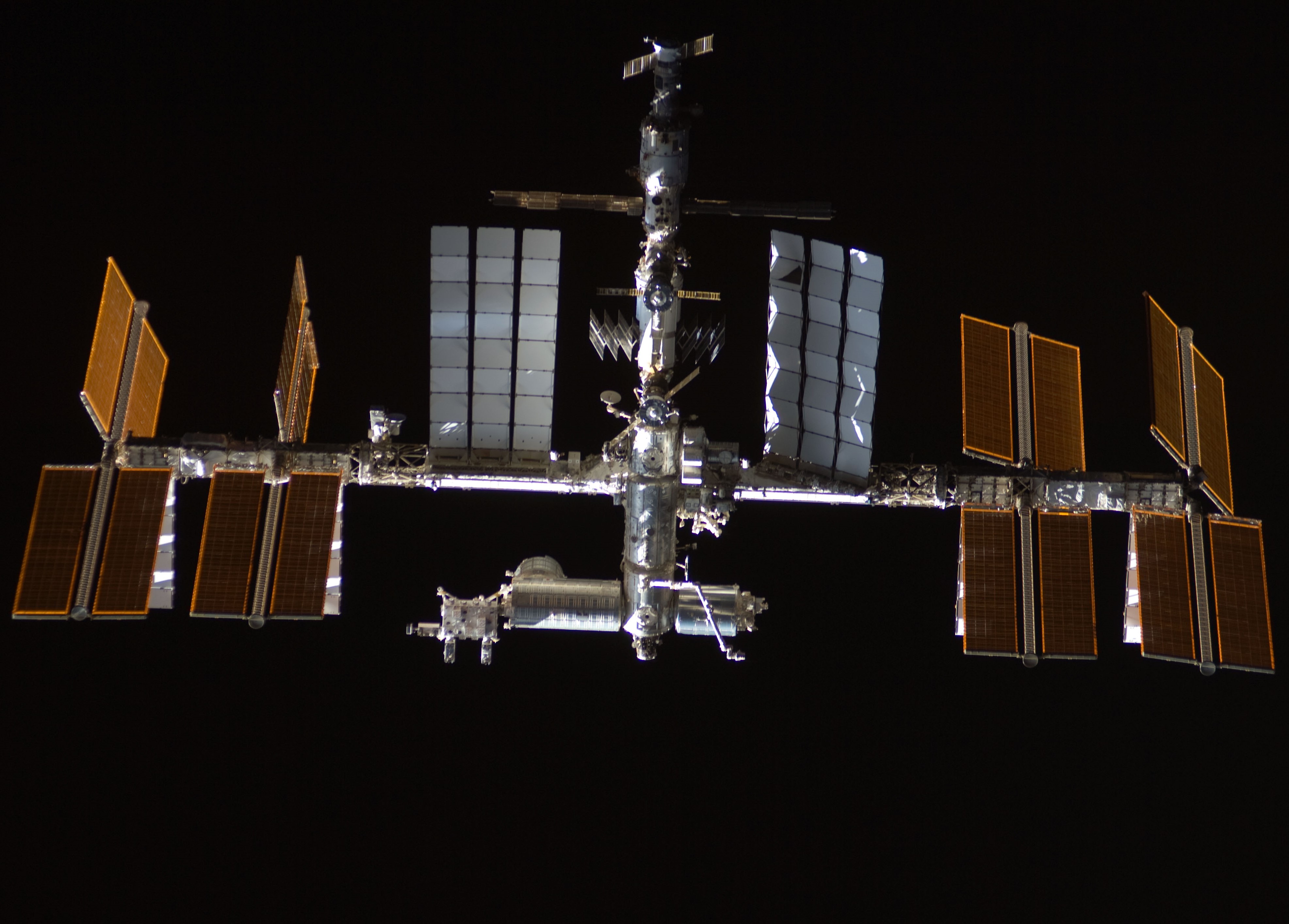
Left: Frederick “Rick” W. Sturckow, left, and Kevin A. Ford perform maneuvers for the rendezvous with the space station. Middle: Discovery as seen from the space station during the rendezvous. Right: The space station as seen from Discovery during the rendezvous.
On the mission’s third day, Sturckow assisted by his crewmates brought Discovery in for a docking with the space station. The docking occurred on the 25th anniversary of Discovery’s first launch on the STS-41D mission on Aug. 30, 1984. During the rendezvous, Sturckow stopped the approach at 600 feet and completed the Rendezvous Pitch Maneuver so astronauts aboard the station could photograph Discovery’s underside to look for any damage to the tiles. Shortly after docking, the crews opened the hatches between the two spacecraft and the six-person station crew welcomed the seven-member shuttle crew. After exchanging Soyuz spacesuits and seat liners, Stott joined the Expedition 20 crew and Kopra the STS-128 crew.
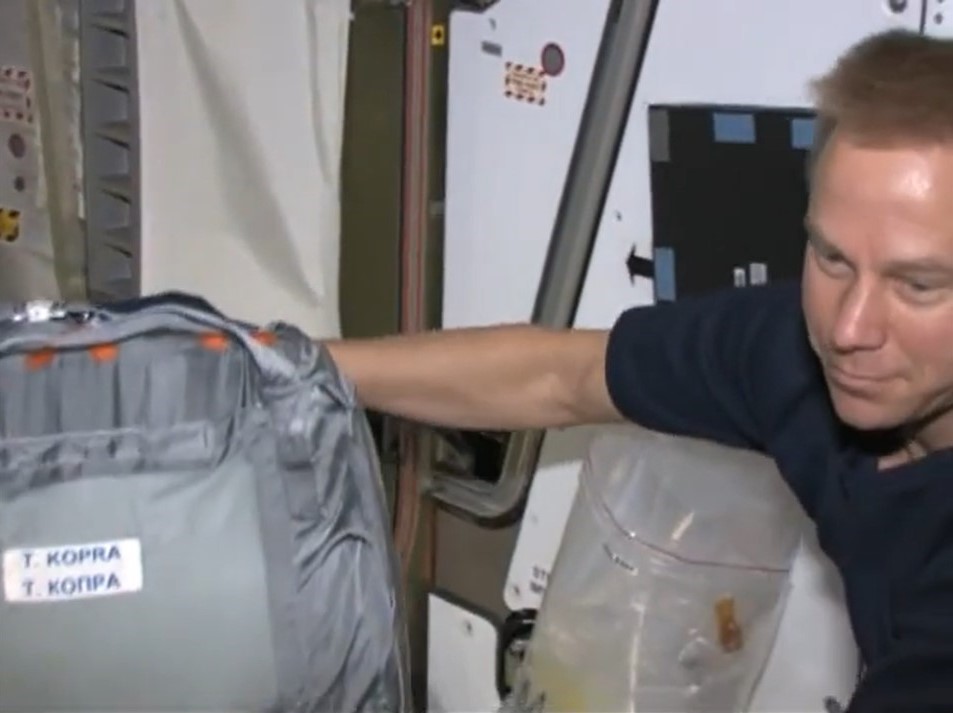
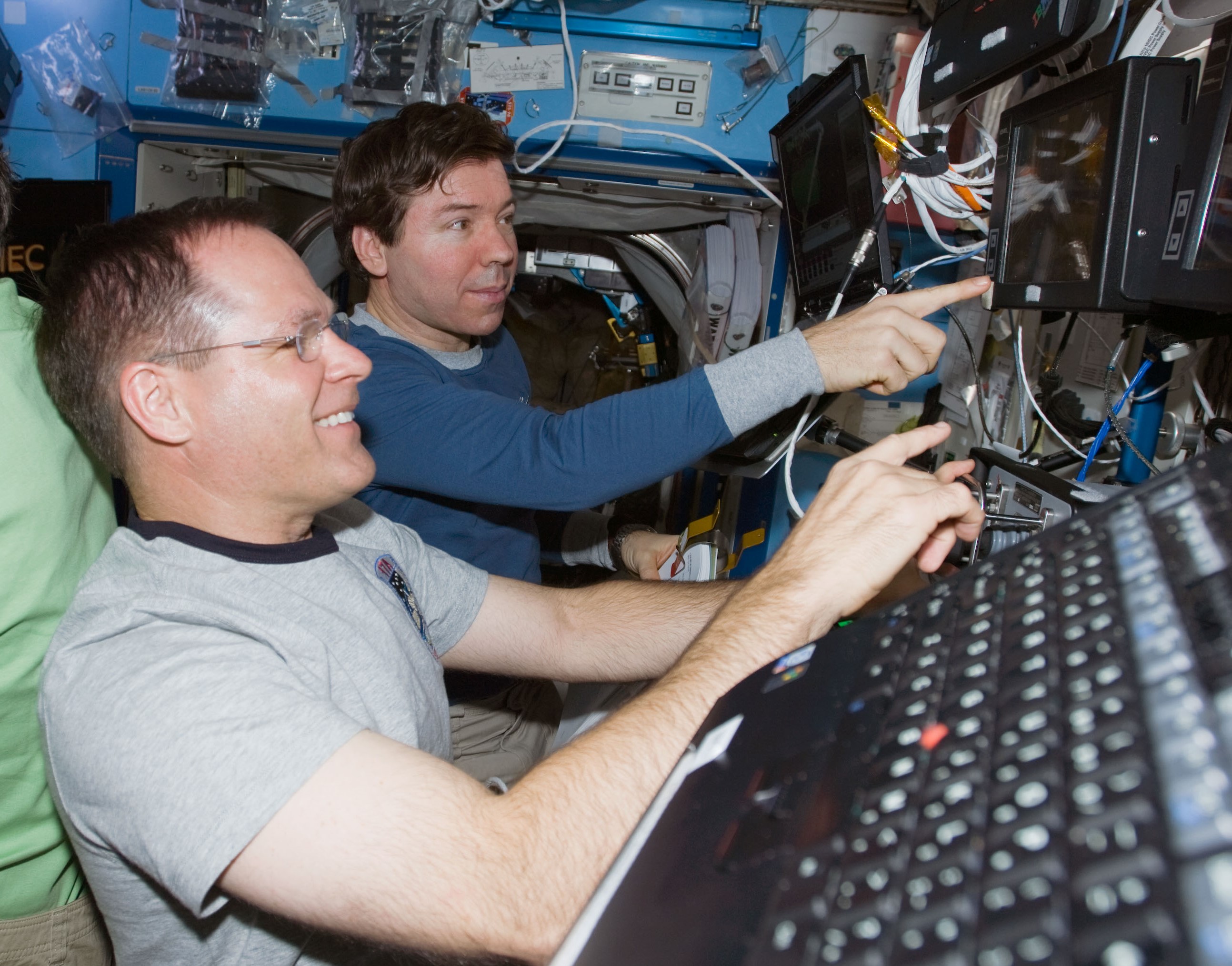

Left: Transfer of Timothy L. Kopra’s Soyuz seat liner and spacesuit from the space station to the space shuttle makes him an STS-128 crew member for return to Earth. Middle:Kevin A. Ford, left, and Michael R. Barratt operate the station’s robotic arm to transfer the Leonardo Multi-Purpose Logistics Module (MPLM) from the shuttle payload bay to the space station. Right: The MPLM approaches the Node 2 nadir berthing port.

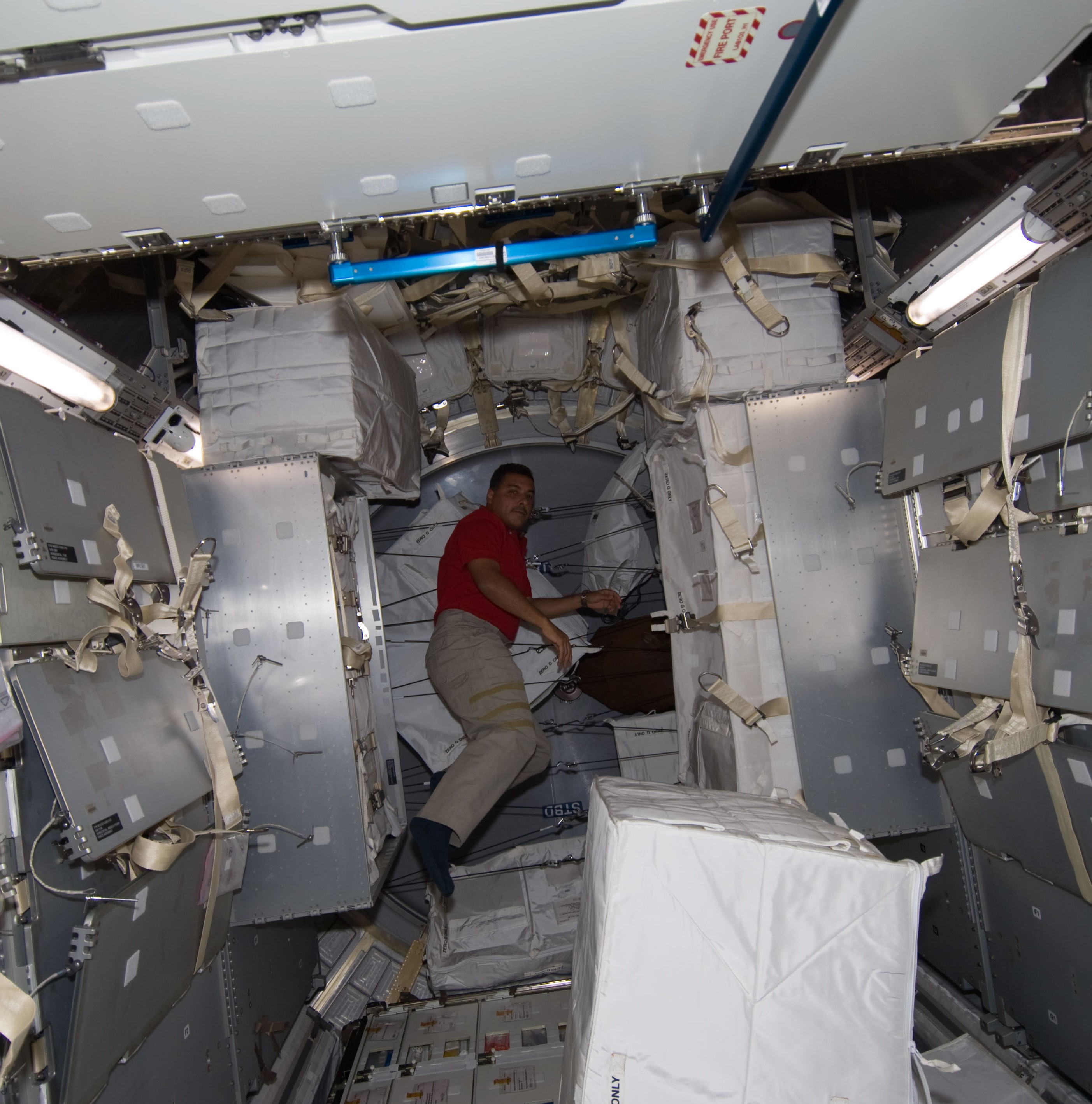
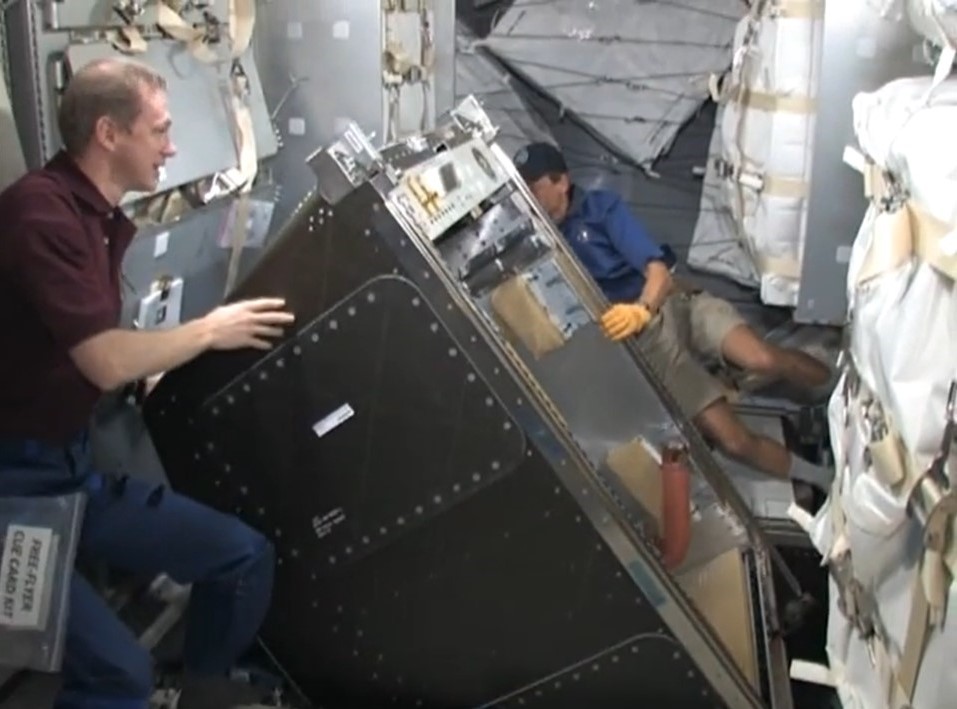
Left: Frank DeWinne, left, and A. Christer Fuglesang, both of the European Space Agency, open the hatch to the Leonardo Multi-Purpose Logistics Module. Middle: José M. Hernández inside the MPLM to monitor transfer operations. Right: DeWinne, left, and Fuglesang begin the transfer of the T2 COLBERT treadmill from the MPLM to the space station.
The day after docking, Ford and Expedition 20 Flight Engineer Michael R. Barrrat used the space station’s robotic arm to grapple the MPLM in the shuttle’s payload bay. They transferred it to the station, berthing it at the Harmony Node 2 module’s nadir port. The crew activated the MPLM and Fuglesang and Expedition 20 Commander Frank L. DeWinne of Belgium representing ESA opened the hatches, enabling the start of cargo transfers.

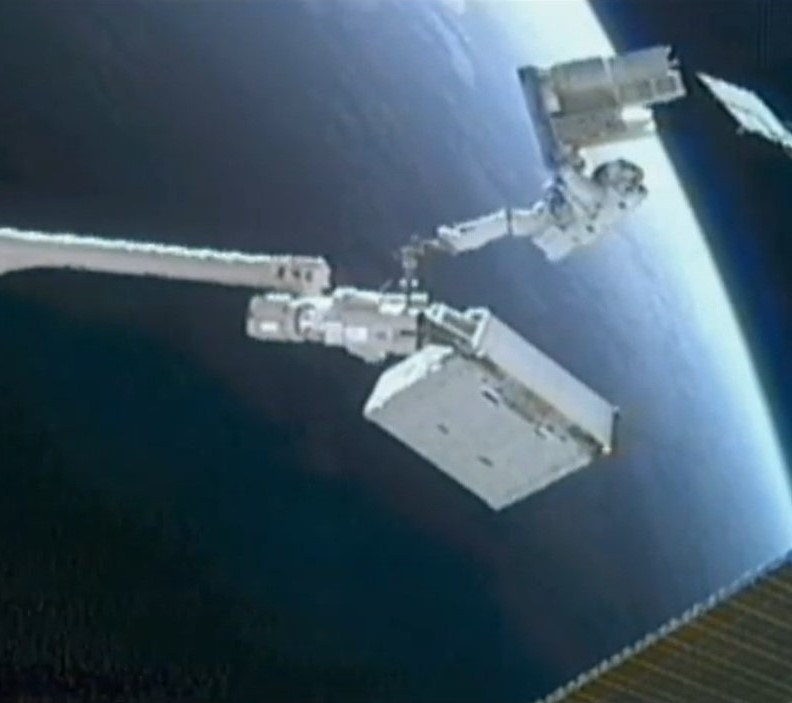
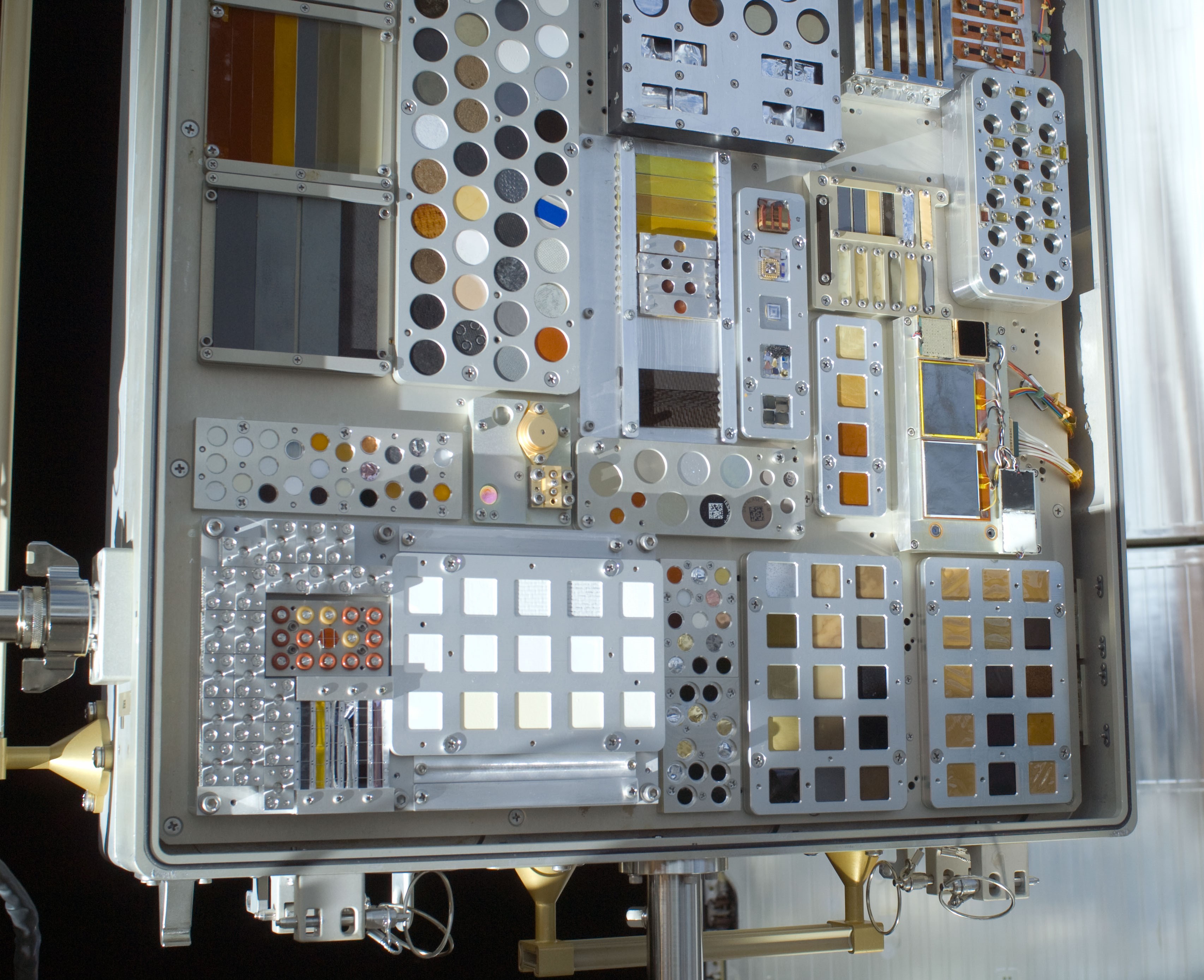

Left: During the first spacewalk, John D. “Danny” Olivas, left, and Nicole P. Stott remove the EuTEF experiment from the Columbus module. Middle left: Stott rides the station robotic arm carrying the EuTEF experiment, with the removed Ammonia Tank Assembly attached to it. Middle right: An open MISSE container showing the various exposure samples. Right: Stott carrying one of the two closed MISSE containers.
During the mission’s first spacewalk on flight day five, Olivas and Stott first removed a used Ammonia Tank Assembly (ATA) from the P1 truss segment. With Ford and Expedition 20 Flight Engineer Robert B. Thirsk of the Canadian Space Agency operating the space station’s robotic arm, they moved Stott to the end of the Columbus module, where she and Olivas removed the European Technology Exposure Facility (EuTEF) science payload. Ford and Thirsk translated Stott to the shuttle’s payload bay where she and Olivas stowed it for return to Earth. The pair returned to Columbus to close and retrieve the two Materials on International Space Station Experiments (MISSE) and stowed them in the payload bay for return. This first spacewalk lasted 6 hours 35 minutes. Meanwhile, other crew members busied themselves with transferring racks and cargo from the MPLM to the space station.

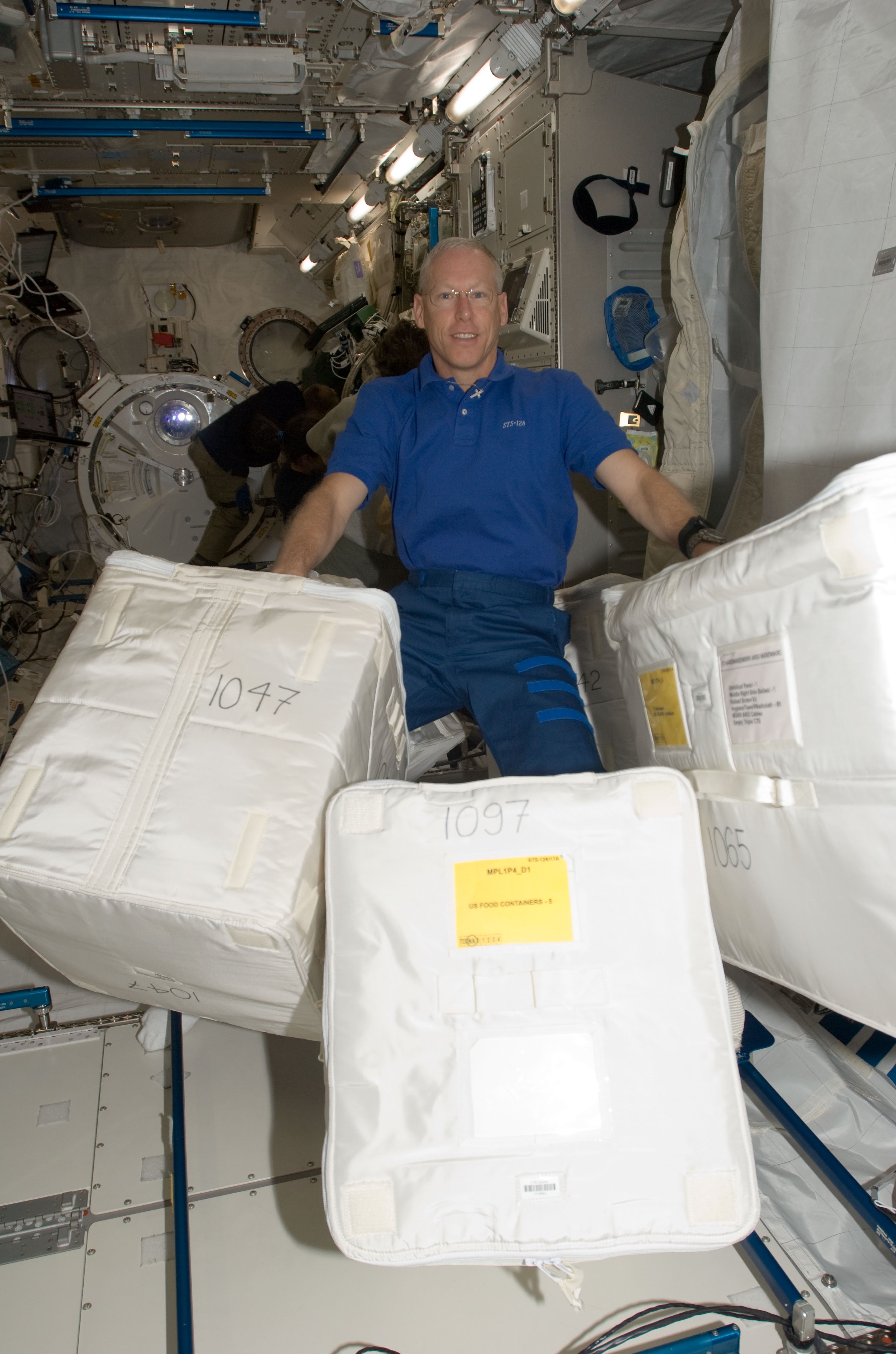
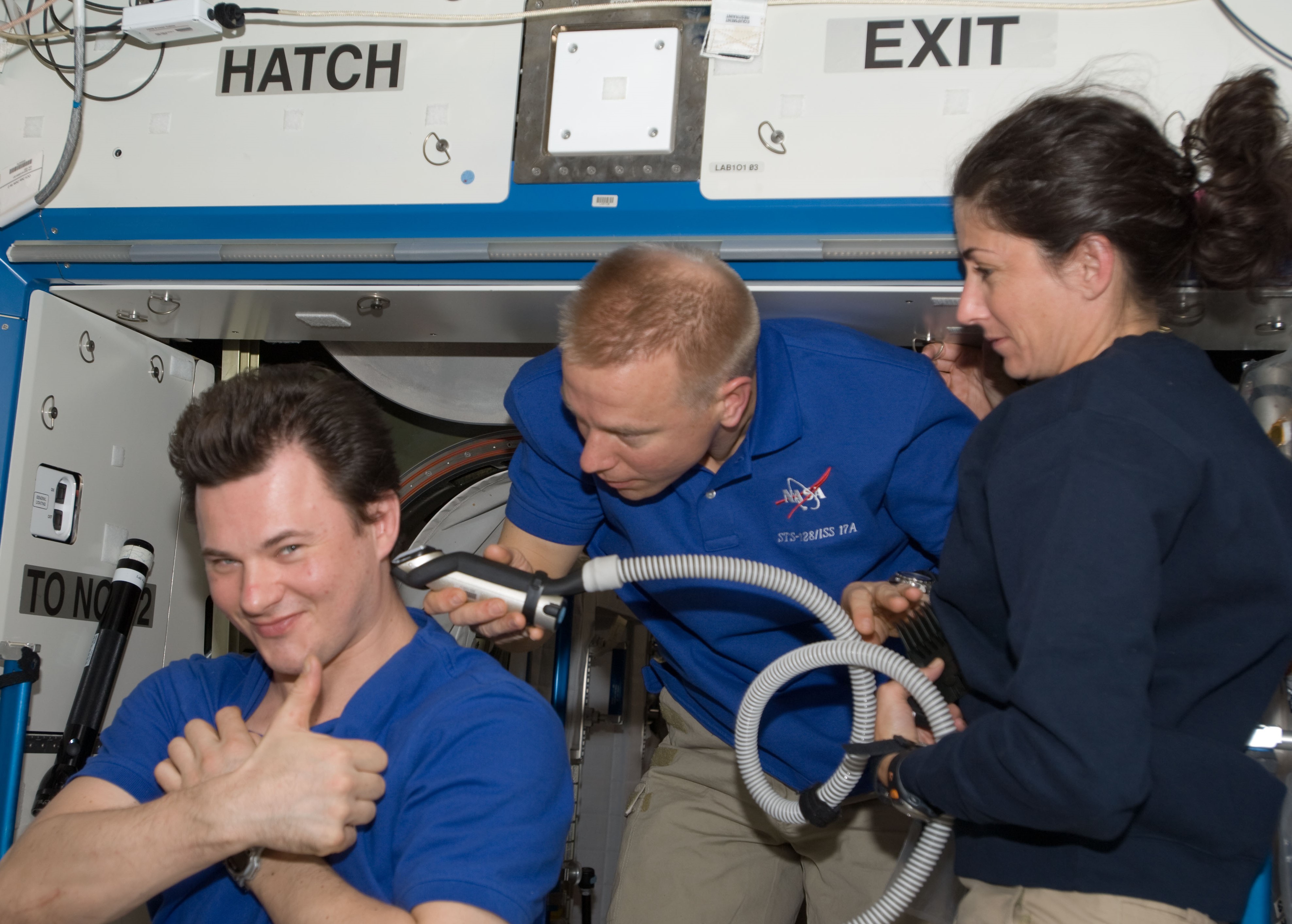
Left: A. Christer Fugelsang of the European Space Agency shows off his installation of the Air Revitalization System rack in the Kibo module. Middle: Patrick G. Forrester with three bags during cargo transfer operations. Right: During handover operations, outgoing space station crew member Timothy L. Kopra, middle, shows incoming crew member Nicole P. Stott how to give a proper haircut in space.
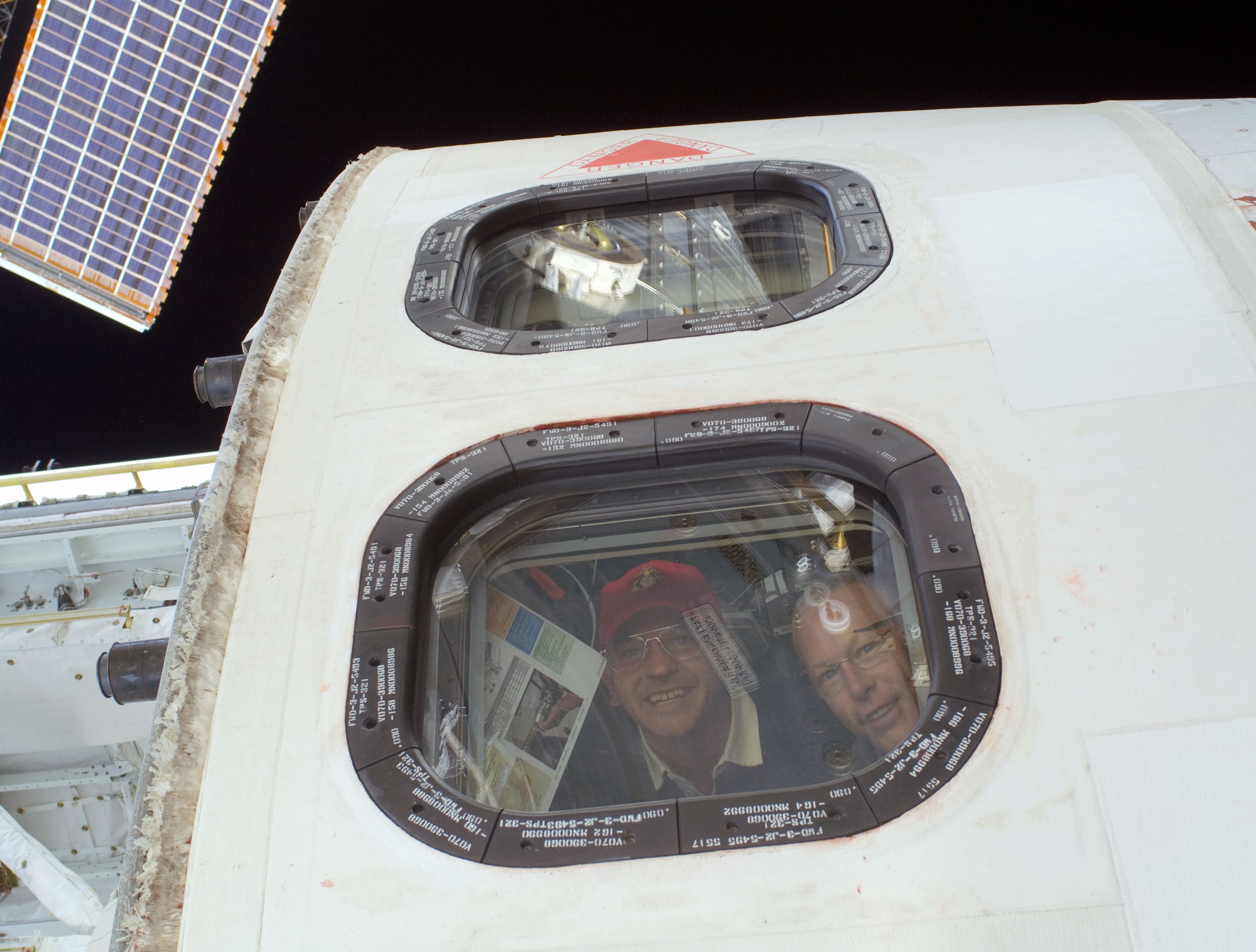
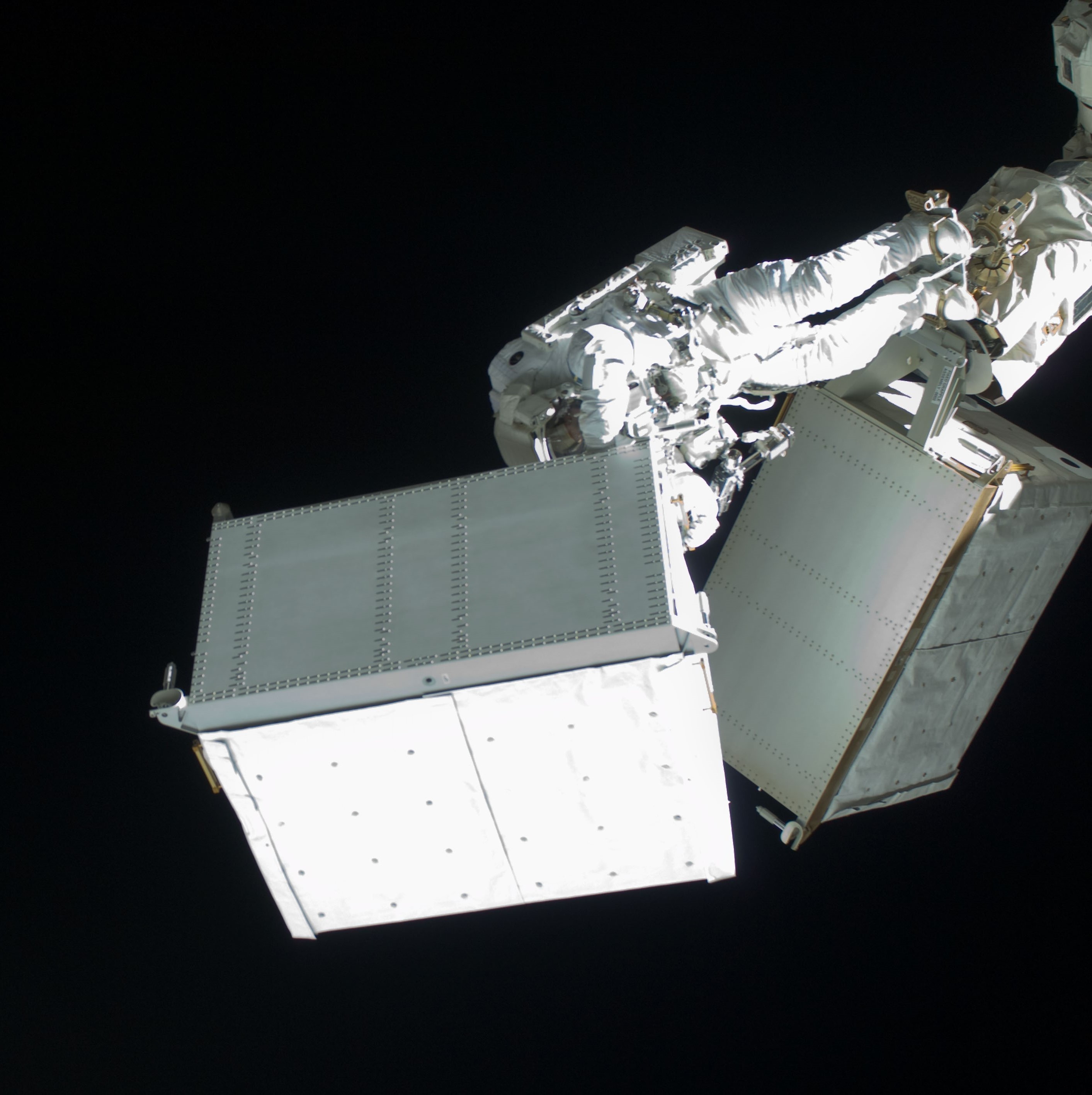

Left: Frederick “Rick” W. Sturckow, left, and Patrick G. Forrester seen through an overhead window. Middle: During the mission’s second spacewalk, A. Christer Fuglesang carries both the old and the new Ammonia Tank Assemblies (ATA) on the end of the space station robotic arm. Right: Fuglesang stowing the old ATA in the shuttle’s payload bay.
Cargo transfers continued throughout flight day six, including the three payload racks. On flight day seven, Olivas and Fuglesang conducted the mission’s second spacewalk, lasting 6 hours 39 minutes. They completed the swap out of the ATA, with Fuglesang riding the station arm carrying both the old and the new units, before they installed the new unit on the P1 truss, and then returned with the old unit to stow it in the payload bay.
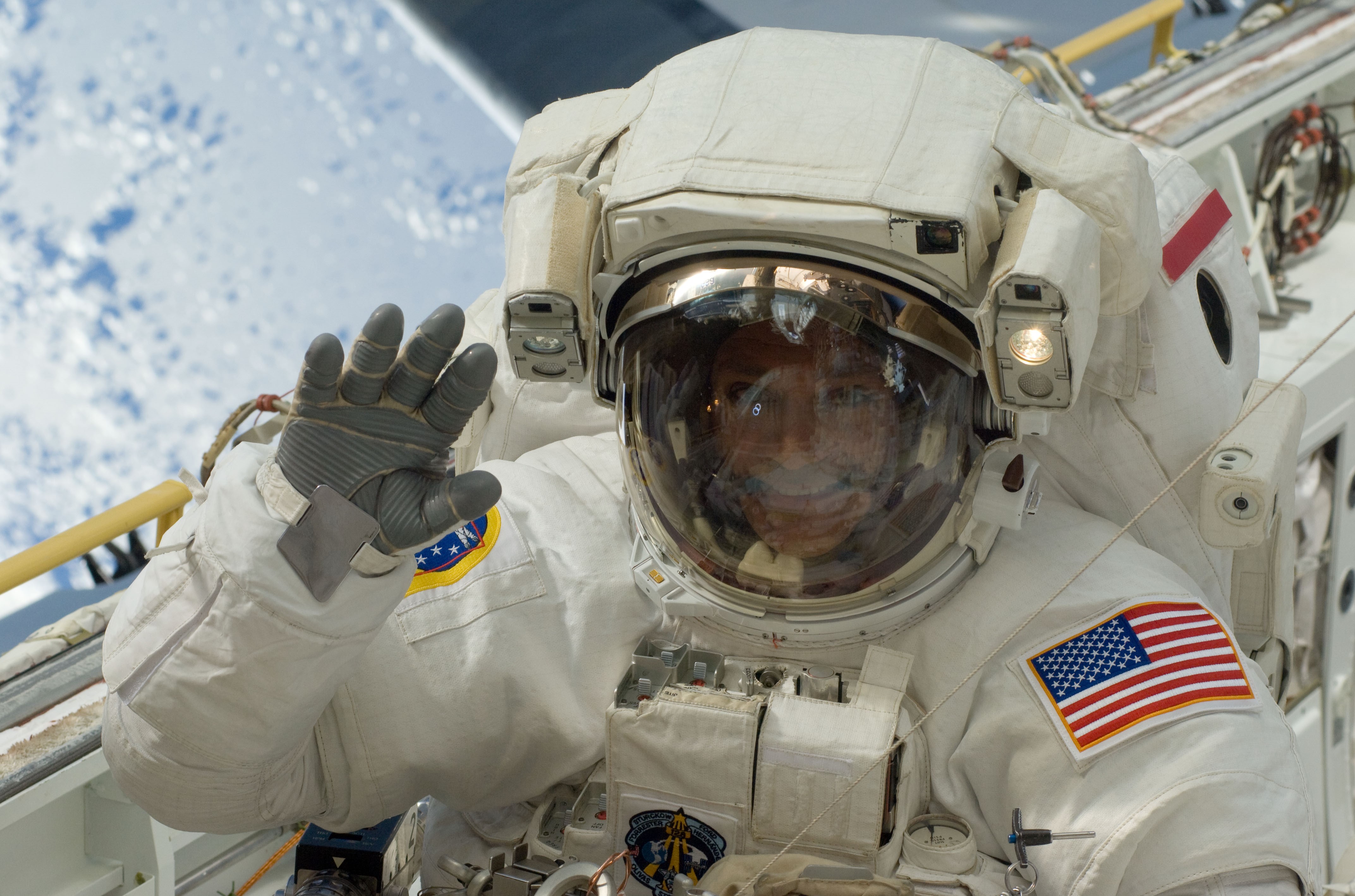
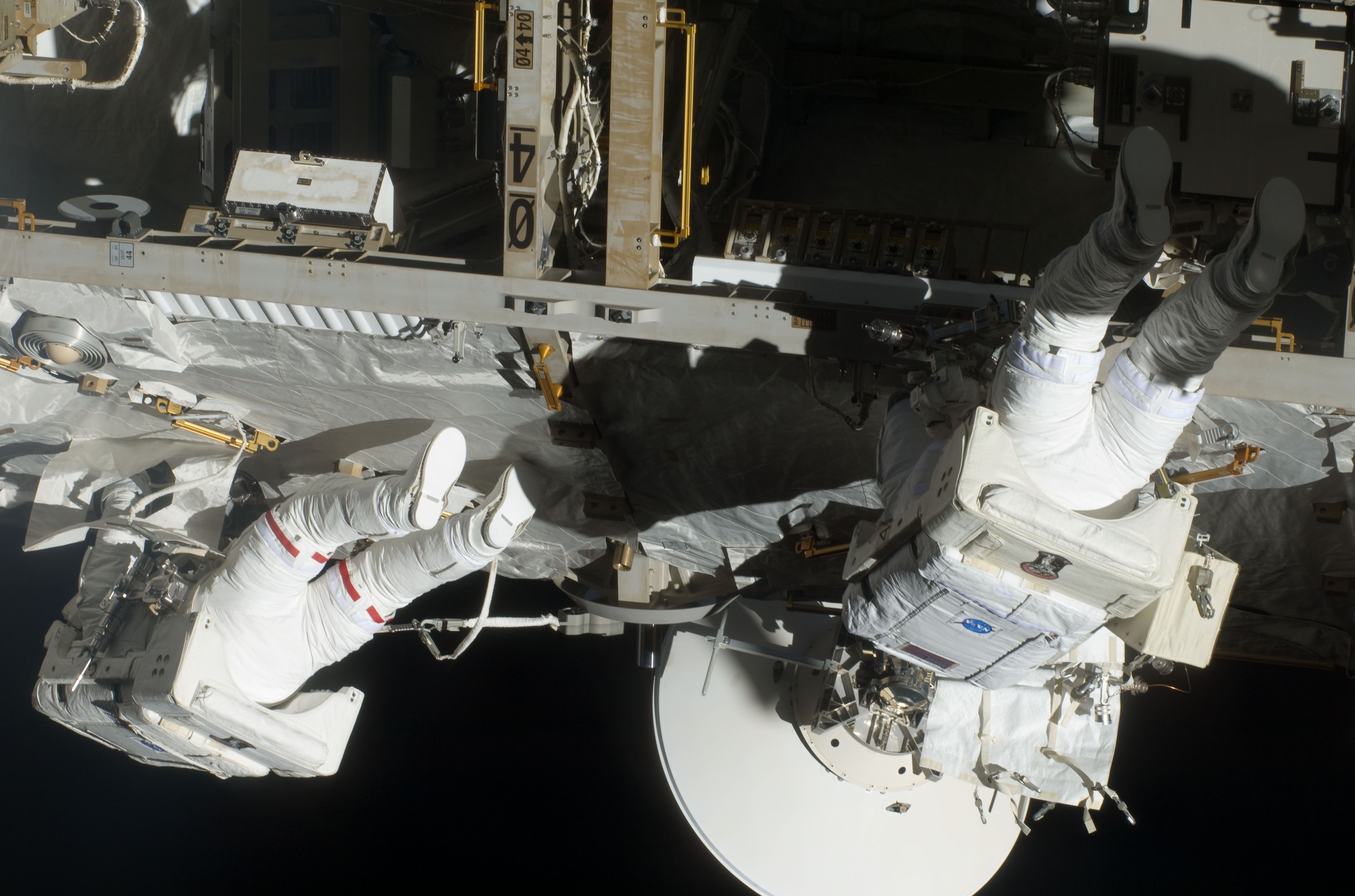
Left: John D. “Danny” Olivas works in the shuttle’s payload bay during the mission’s third spacewalk. Right: Olivas, left, and A. Christer Fuglesang work on the space station truss.
With cargo transfers continuing on flight day eight, the next day Olivas and Fuglesang stepped outside for the mission’s third and final spacewalk. They completed a variety of tasks, including routing cables to accommodate the Tranquility Node 3 module scheduled to arrive on a future space shuttle flight, and installing GPS antennas on the S0 truss. This spacewalk lasted 7 hours 1 minute, bringing the total spacewalking time for STS-128 to 20 hours 15 minutes. The crew enjoyed a well-deserved off-duty day on flight day 10.
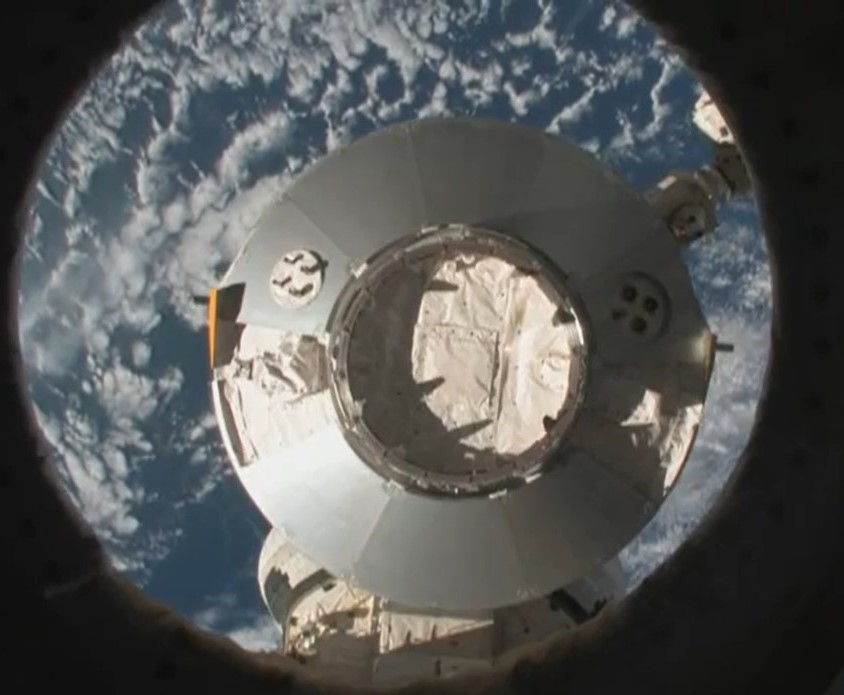

Left: Astronauts robotically stow the Leonardo Multi-Purpose Logistics Module (MPLM) back in Discovery’s payload bay. Right: A. Christer Fuglesang, left, and Nicole P. Stott operate the space station’s robotic arm to stow the MPLM in the payload bay.
The astronauts completed the final transfers on Sept. 8, the mission’s 11th flight day, they deactivated the MPLM, and closed its hatch. Operating the space station’s robotic arm, Stott and Fuglesang transferred the MPLM from the station back to the shuttle’s payload bay. On Sept. 10, the next vehicle to occupy that port, the Japanese H-II Transfer Vehicle-1 (HTV-1), launched from the Tanegashima Space Center, arriving at the station one week later.
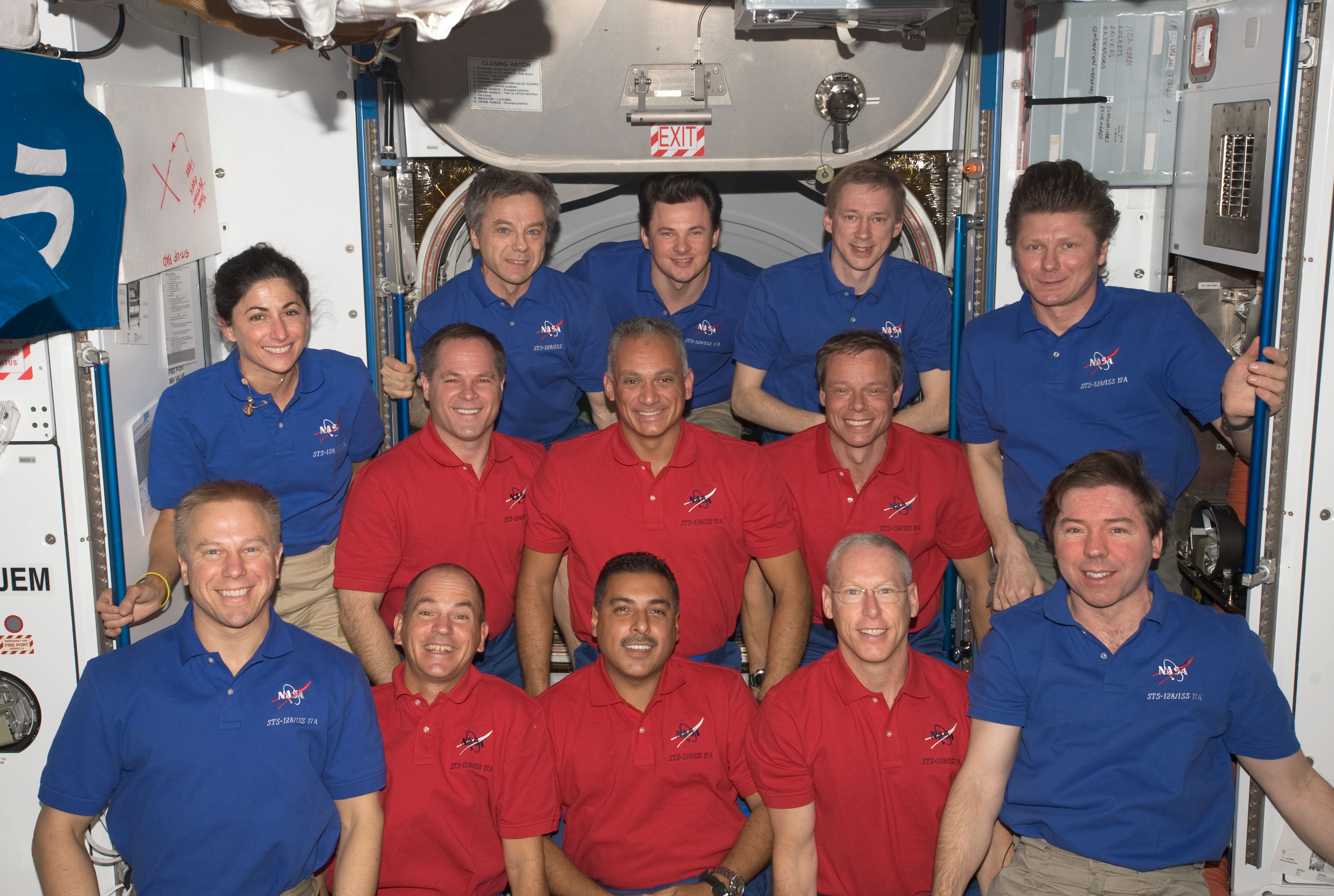
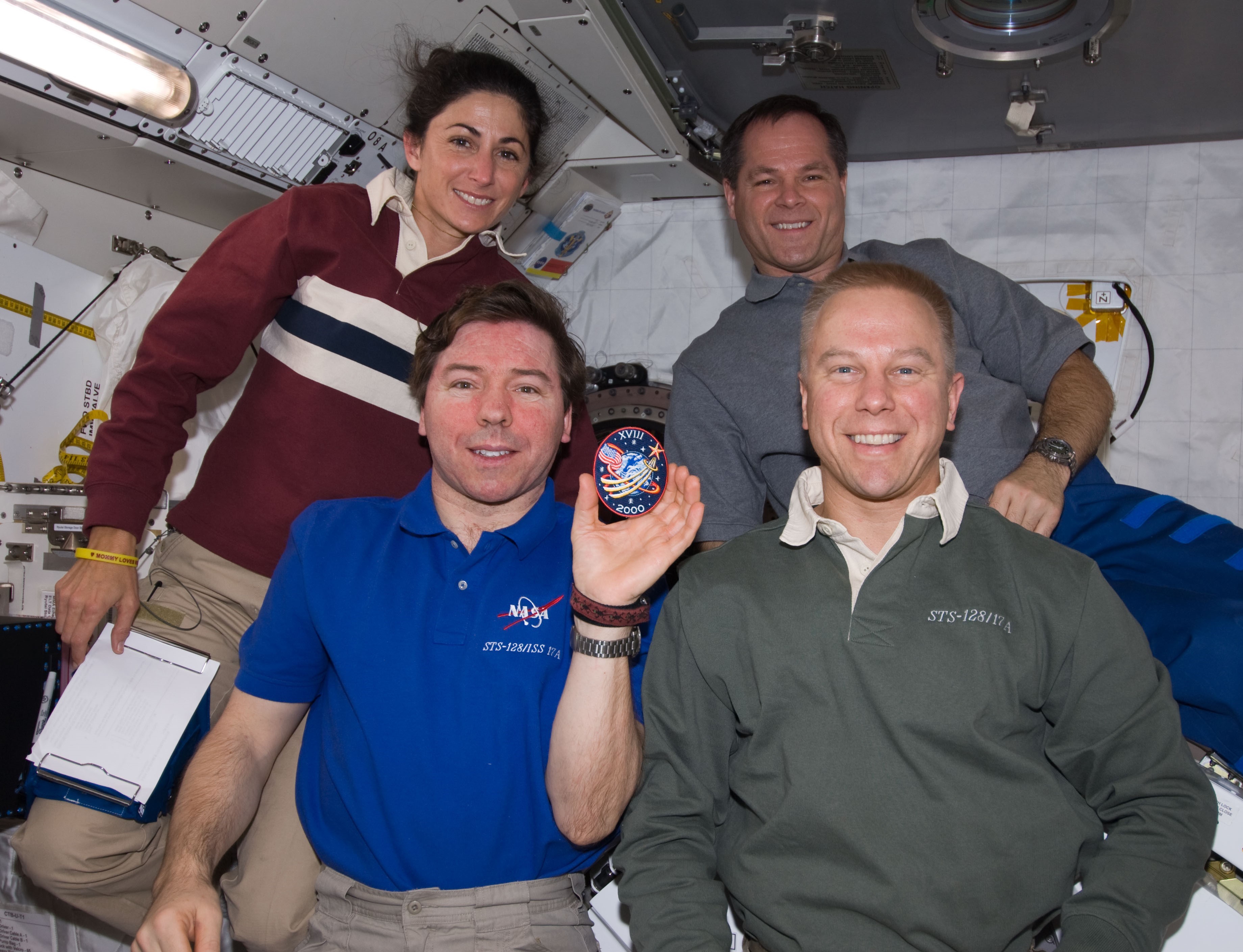
Left: The 13 members of Expedition 20, blue shirts, and STS-128, red shirts, pose for a final photograph before saying their farewells. Right: Four members of the astronaut class of 2000 in space together.
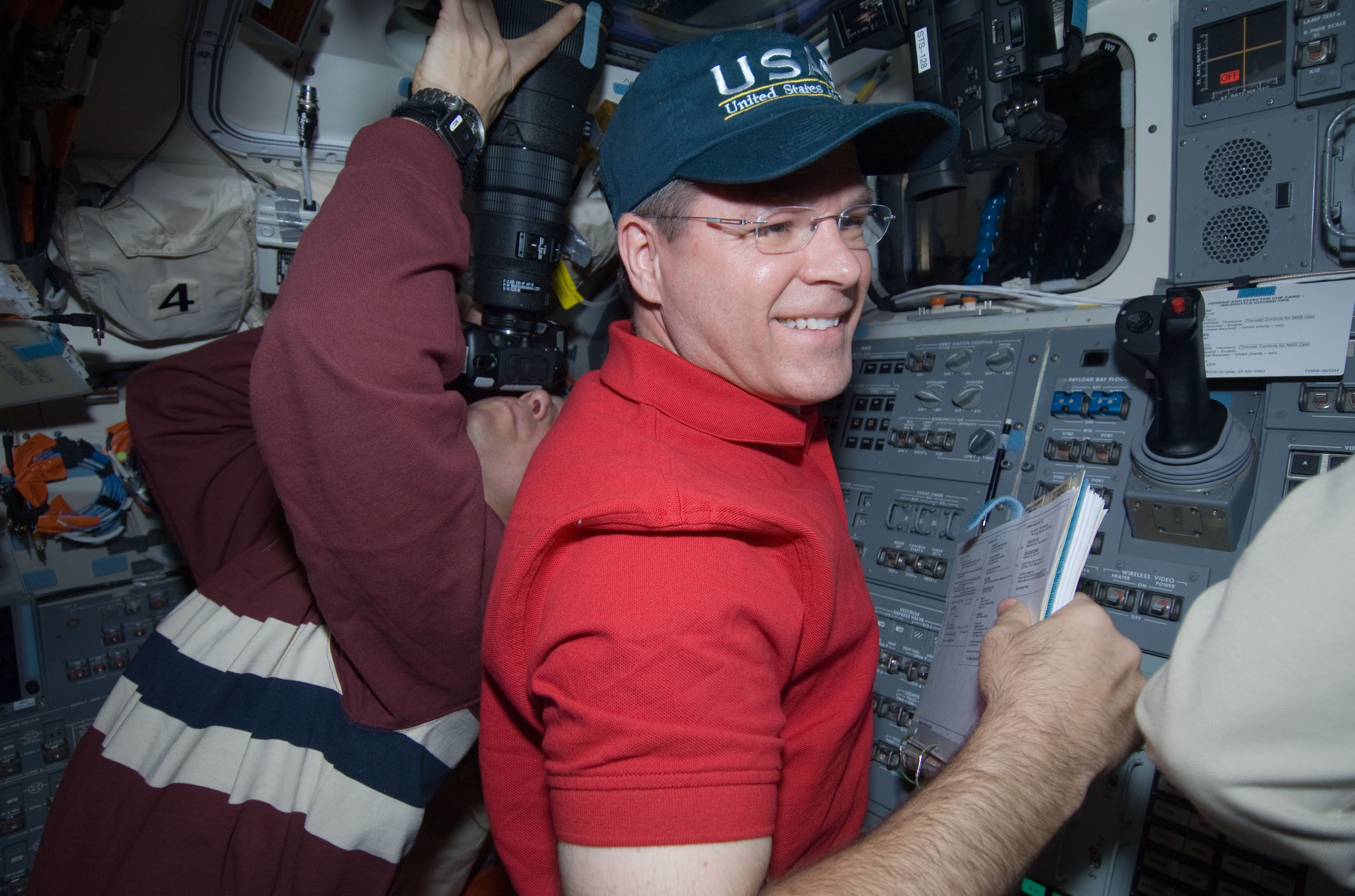
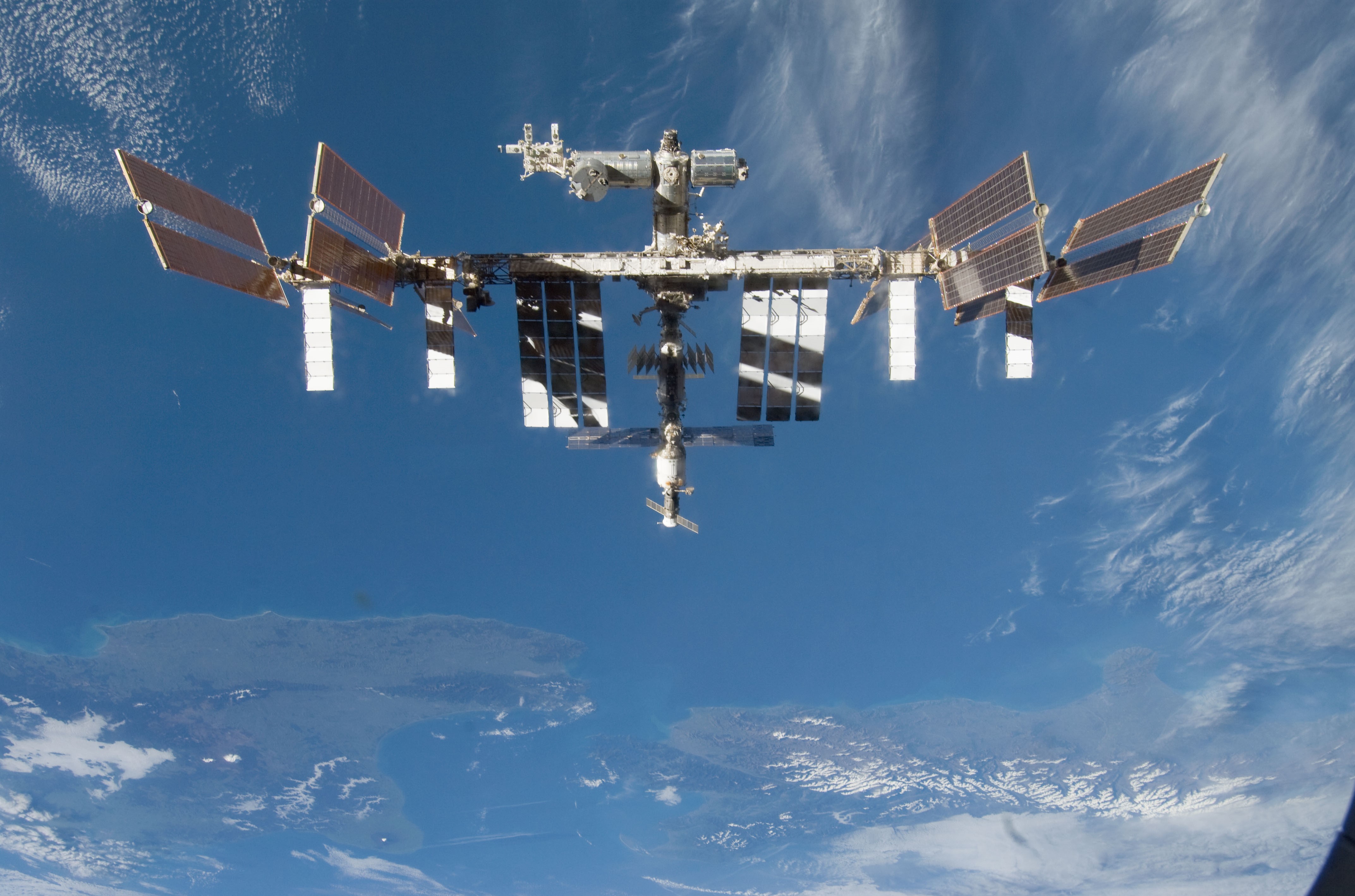
Left: Kevin A. Ford pilots Discovery for the undocking and flyaround. Right: The space station seen from Discovery during the flyaround.
That same day, they held a brief farewell ceremony, parted company, and closed the hatches between the two spacecraft. The next day, with Ford at the controls, Discovery undocked from the space station, having spent nine days as a single spacecraft. Ford completed a flyaround of the station, with the astronauts photographing it to document its condition. A final separation burn sent Discovery on its way. Ford, Forrester, and Hernández used the shuttle’s arm to pick up the OBSS and perform a late inspection of Discovery’s thermal protection system. On flight day 13, Sturckow and Ford tested Discovery’s reaction control system thrusters and flight control surfaces in preparation for the next day’s entry and landing. The entire crew busied themselves with stowing all unneeded equipment. Bad weather at KSC delayed the landing by a day, and more bad weather diverted the landing to Edwards Air Force Base in California.
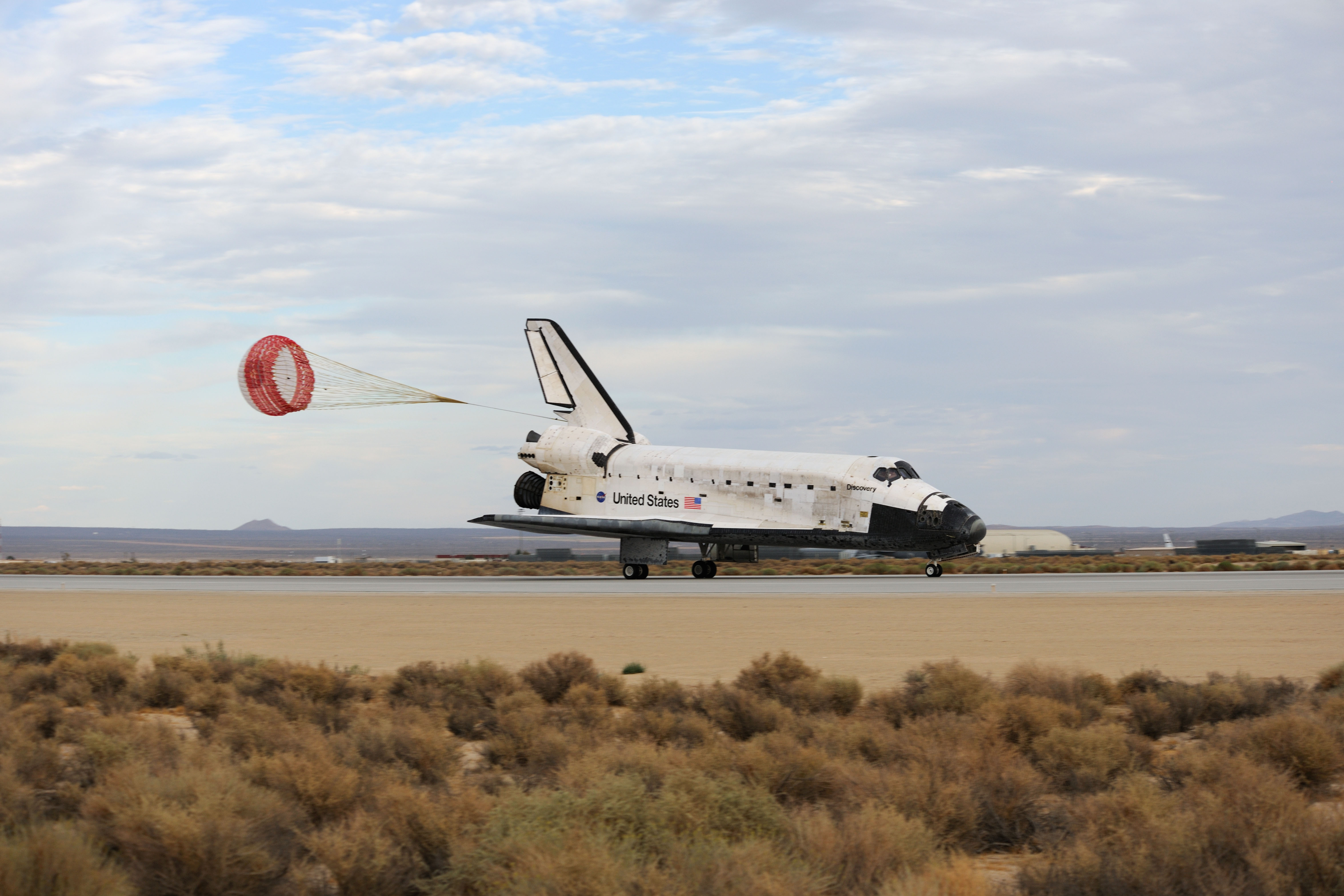
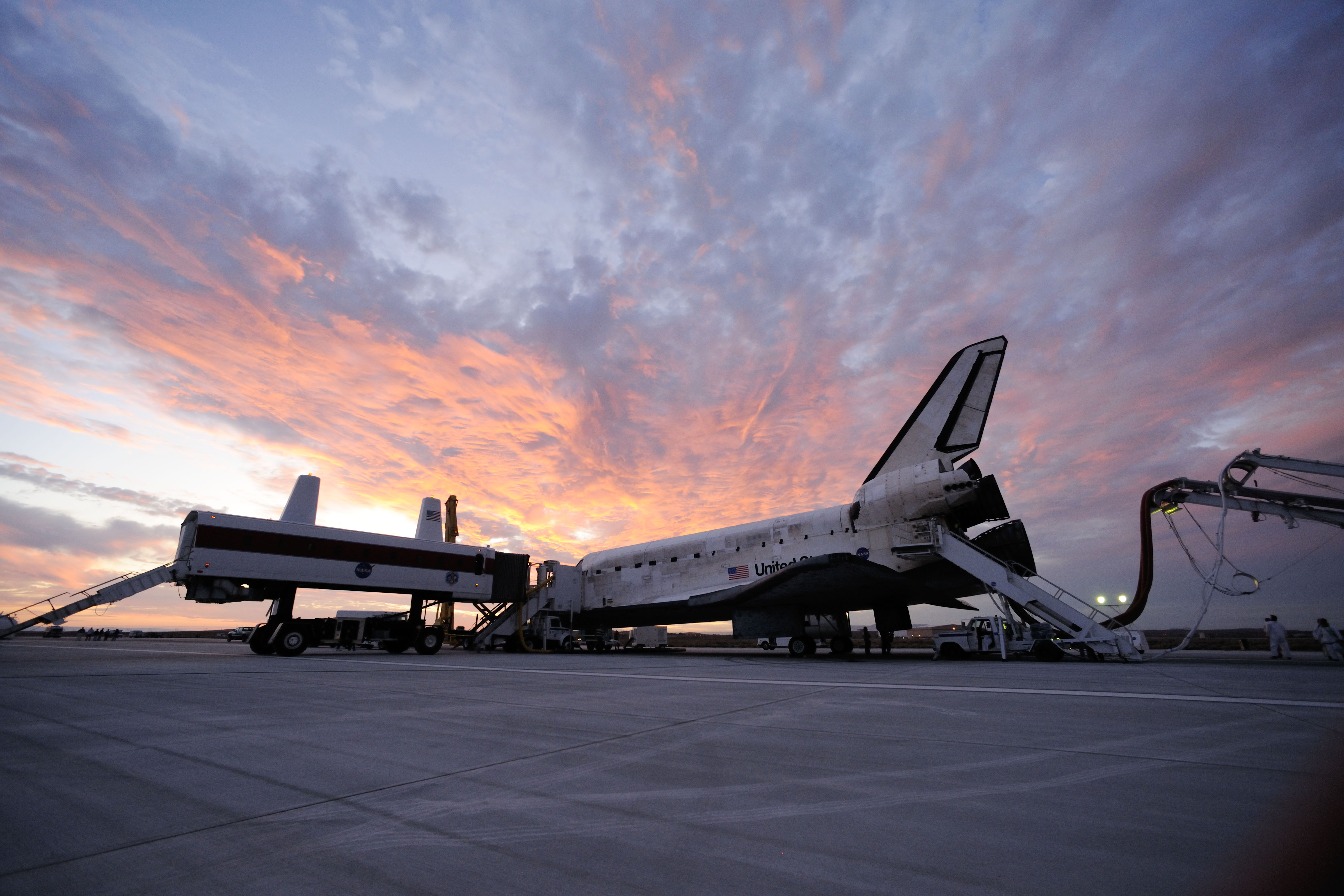
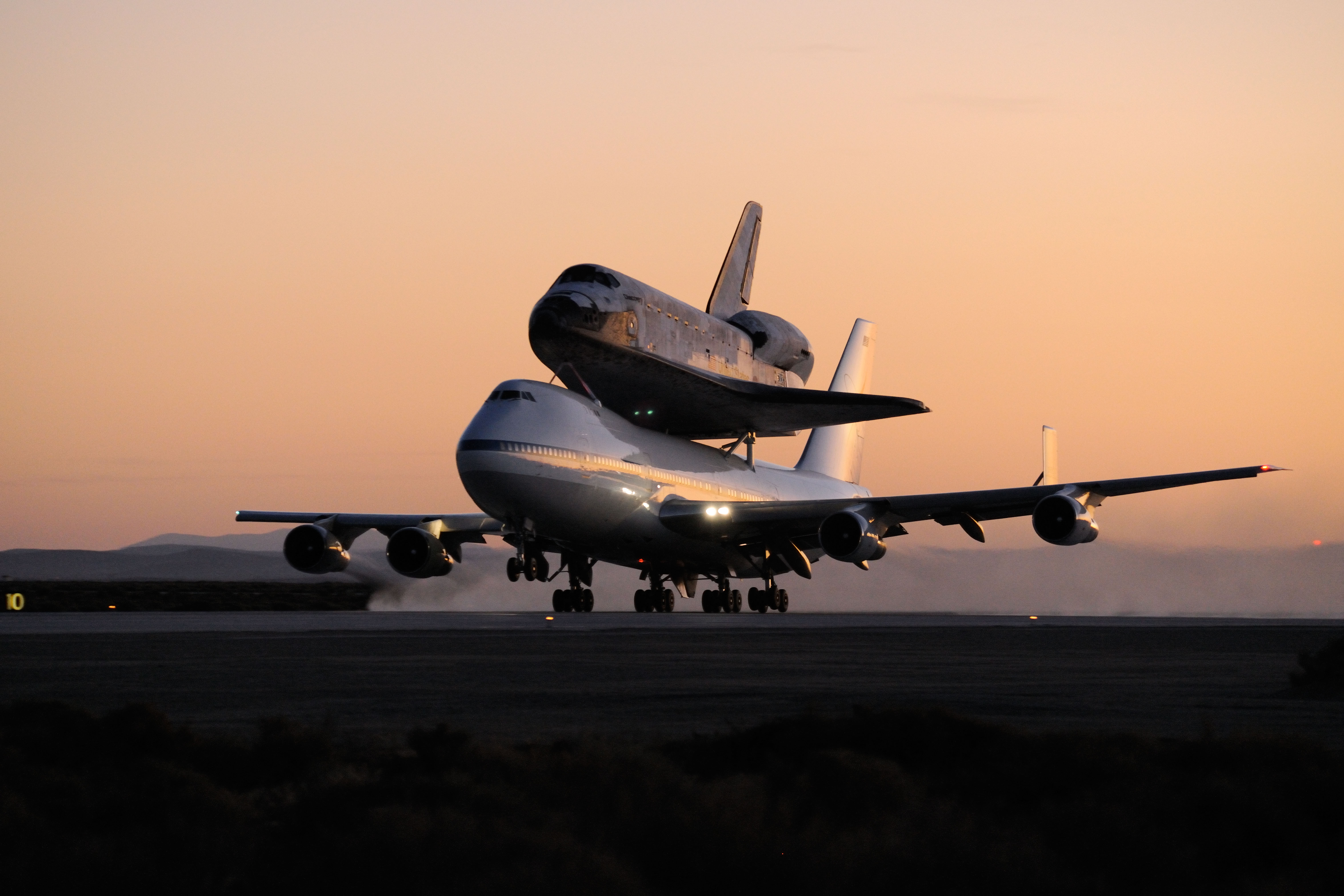
Left: Discovery touches down at Edwards Air Force Base in California. Middle: The Crew Transport Vehicle has approached Discovery to enable the astronauts to exit the vehicle. Right: Discovery atop its Shuttle Carrier Aircraft departs Edwards for NASA’s Kennedy Space Center in Florida.

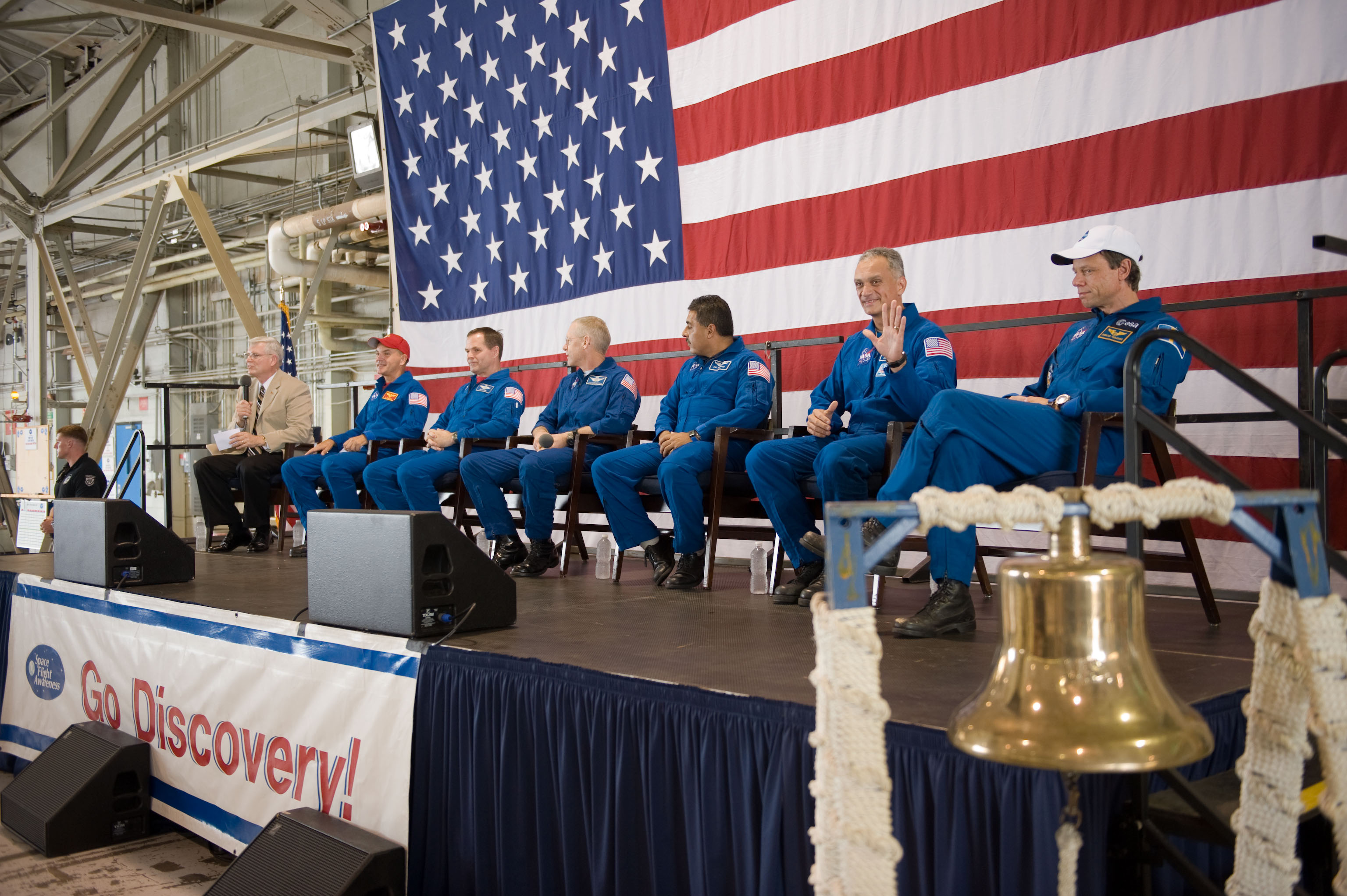
Left: Six of the STS-128 astronauts pose with Discovery on the runway at Edwards Air Force Base in California. Right: The welcome home ceremony for the STS-128 crew at Ellington Field in Houston.
On Sept. 11, the astronauts closed Discovery’s payload bay doors, donned their launch and entry suits, and strapped themselves into their seats, a special recumbent one for Kopra who had spent the last two months in weightlessness. Sturckow fired Discovery’s two Orbital Maneuvering System engines to bring them out of orbit and head for a landing half an orbit later. He guided Discovery to a smooth touchdown at Edwards, as it turned out the final space shuttle landing at the California facility. The landing capped off a very successful STS-128 mission of 13 days, 20 hours, 54 minutes. They orbited the planet 219 times. Kopra spent 58 days, 2 hours, 50 minutes in space, completing 920 orbits of the Earth. Workers placed Discovery atop a Shuttle Carrier Aircraft, a modified Boeing 747, to ferry it back to KSC where it landed on Sept. 21. Engineers began preparing it for its next flight, STS-131 in April 2010.
Enjoy the crew narrate a video about the STS-128 mission.
What's Your Reaction?



















.jpg?#)























